It looks like this past few weeks have been pretty busy around Renault's design center. First, that strange-looking 2013 Twizy F1 Concept was unveiled at the end of April and today, at the 71st Monaco Grand Prix, the French company unveiled the Twin'Run - a concept that pays tribute to legendary R5 Turbo and Clio V6.
The concept made its first run at the Monaco Grand Prix with Carlos Tavares, Chief Operating Officer, at the wheel. Alongside it was a Clio V6 with F1 star Charles Pic at the wheel and a Maxi 5 Turbo driven by Jean Ragnotti.
While there is no chance for the Twin'Run to enter production, Renault did confirm that it previews the styling of the company's future city car.
The unveiling of the new Twin'Run concept will be followed by a series of other dynamic demonstrations at various auto-centric events, like July's Goodwood Festival of Speed->ke3879.
Updated 05/24/2013: This review has been updated with the official details, images and specs.
Updated 05/27/2013: Renault unveiled a new video explaining the philosophy behind the new Twin-Run Concept. Enjoy!
Click past the jump to read more about the Twin’Run Concept.
2013 Renault Twin'Run Concept
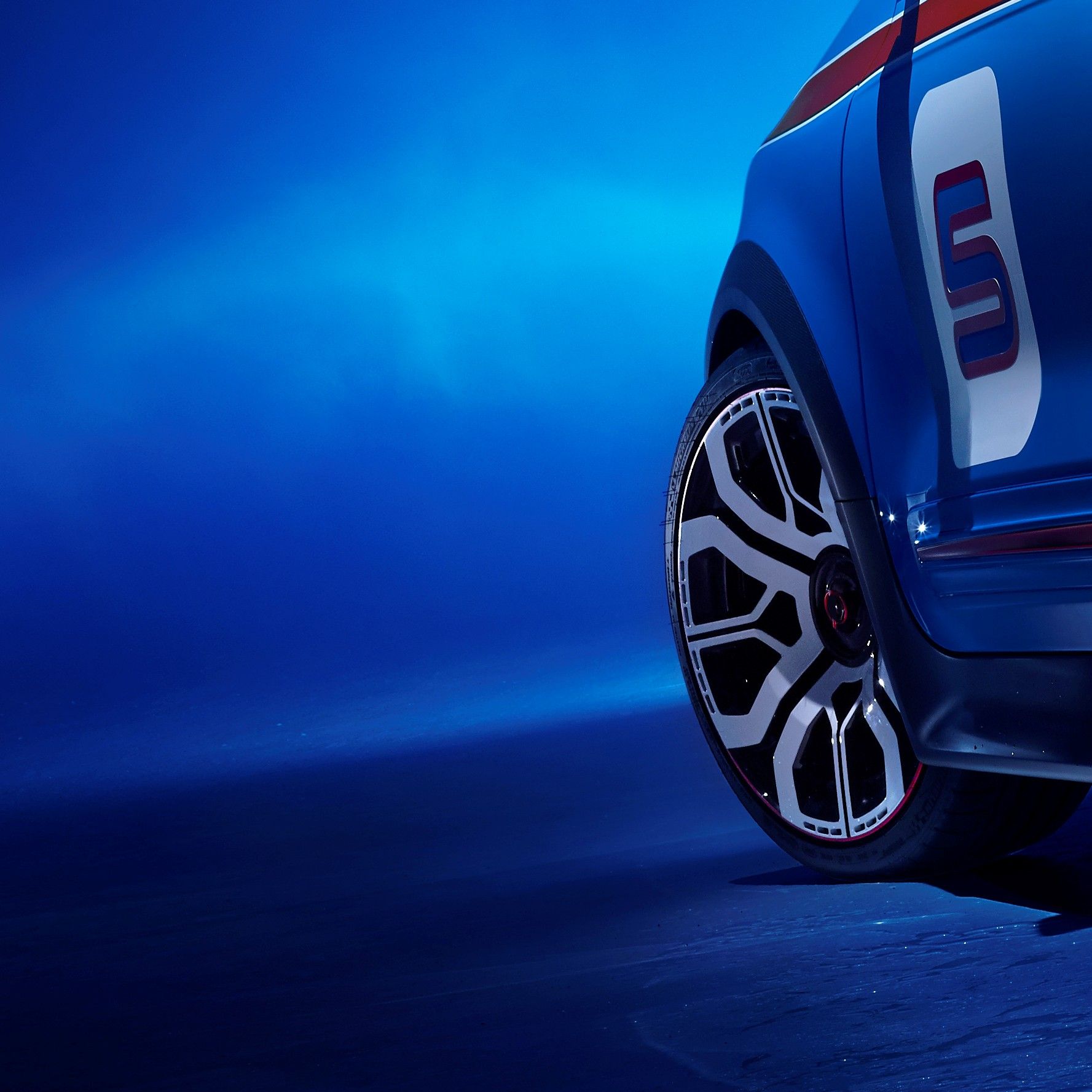

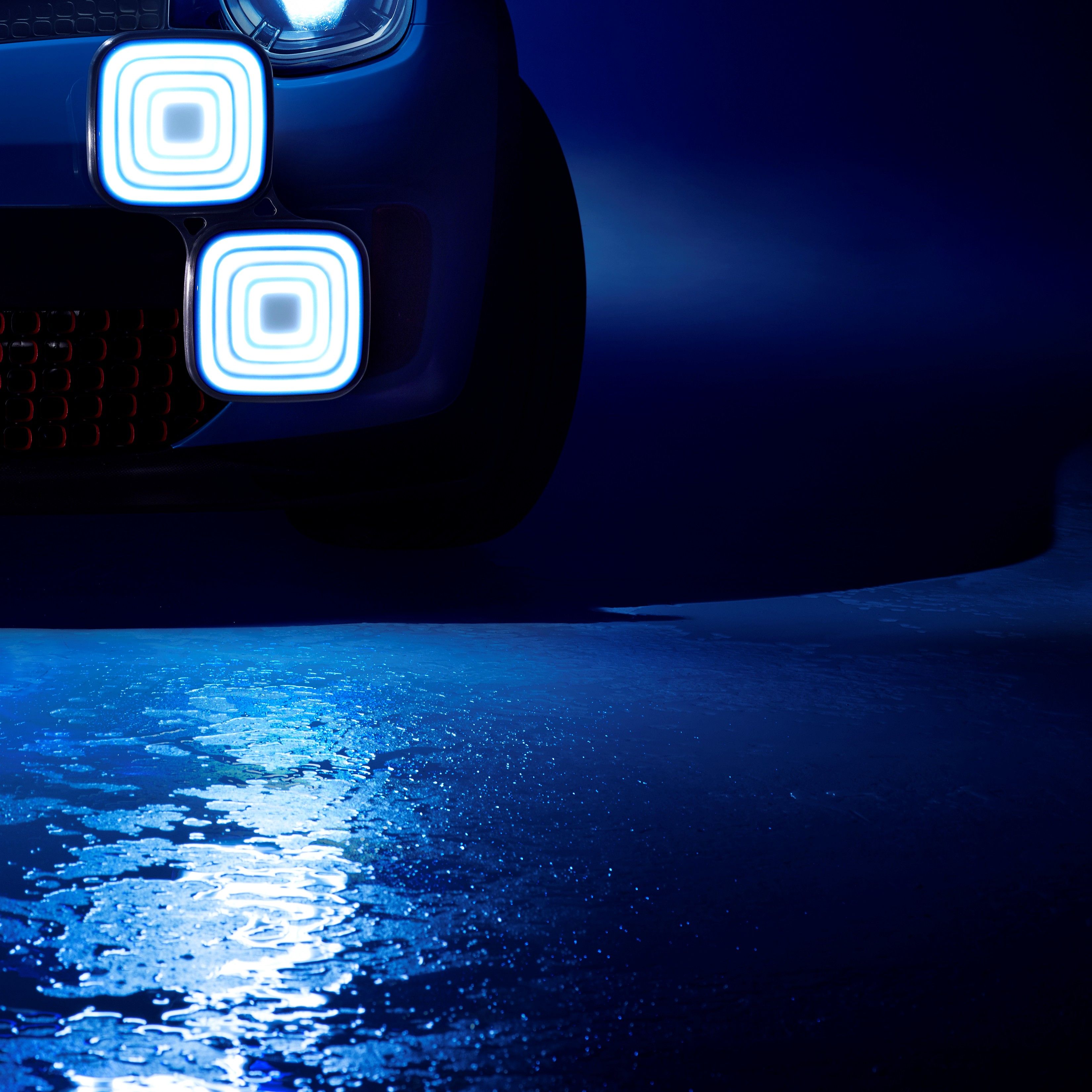
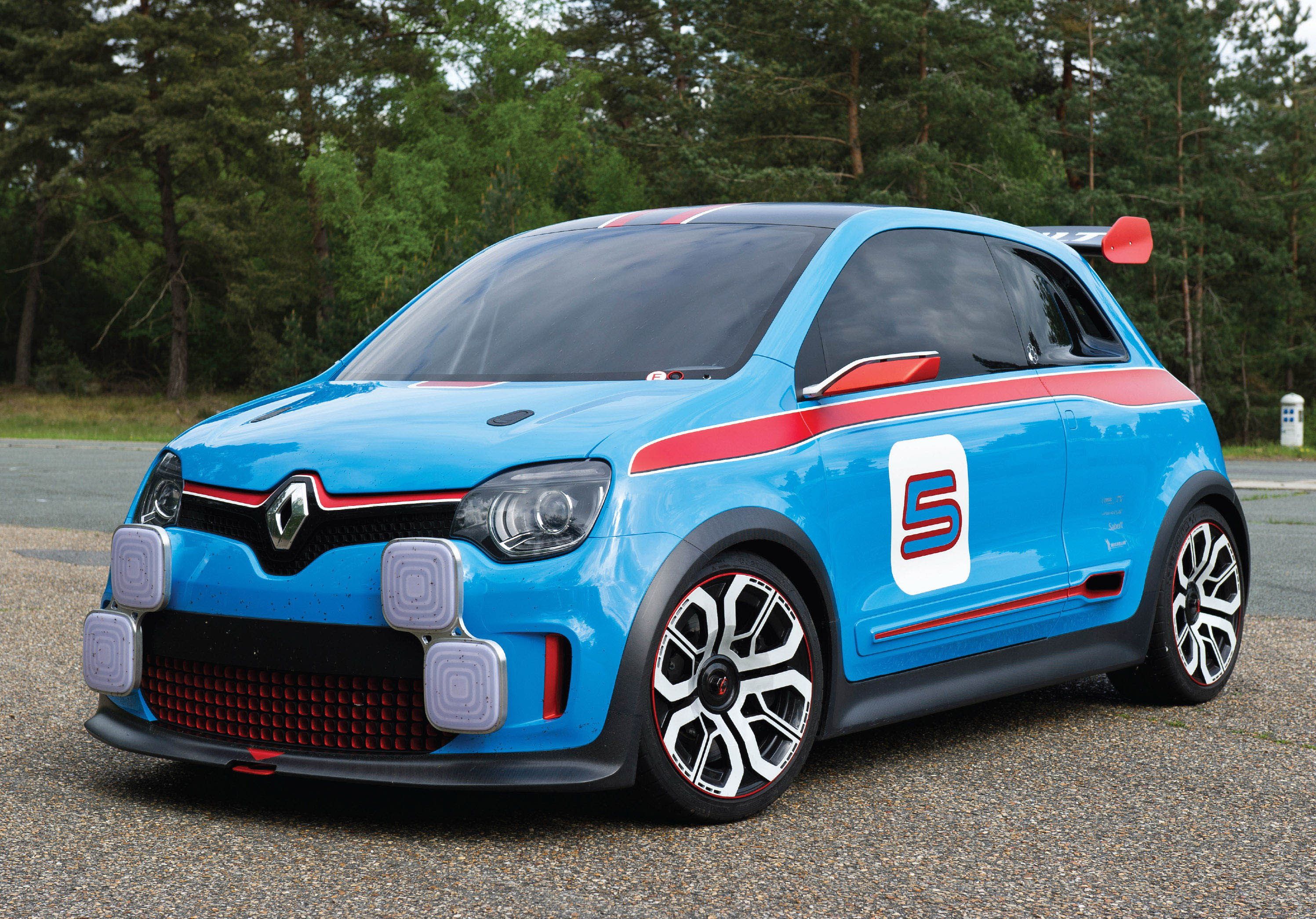
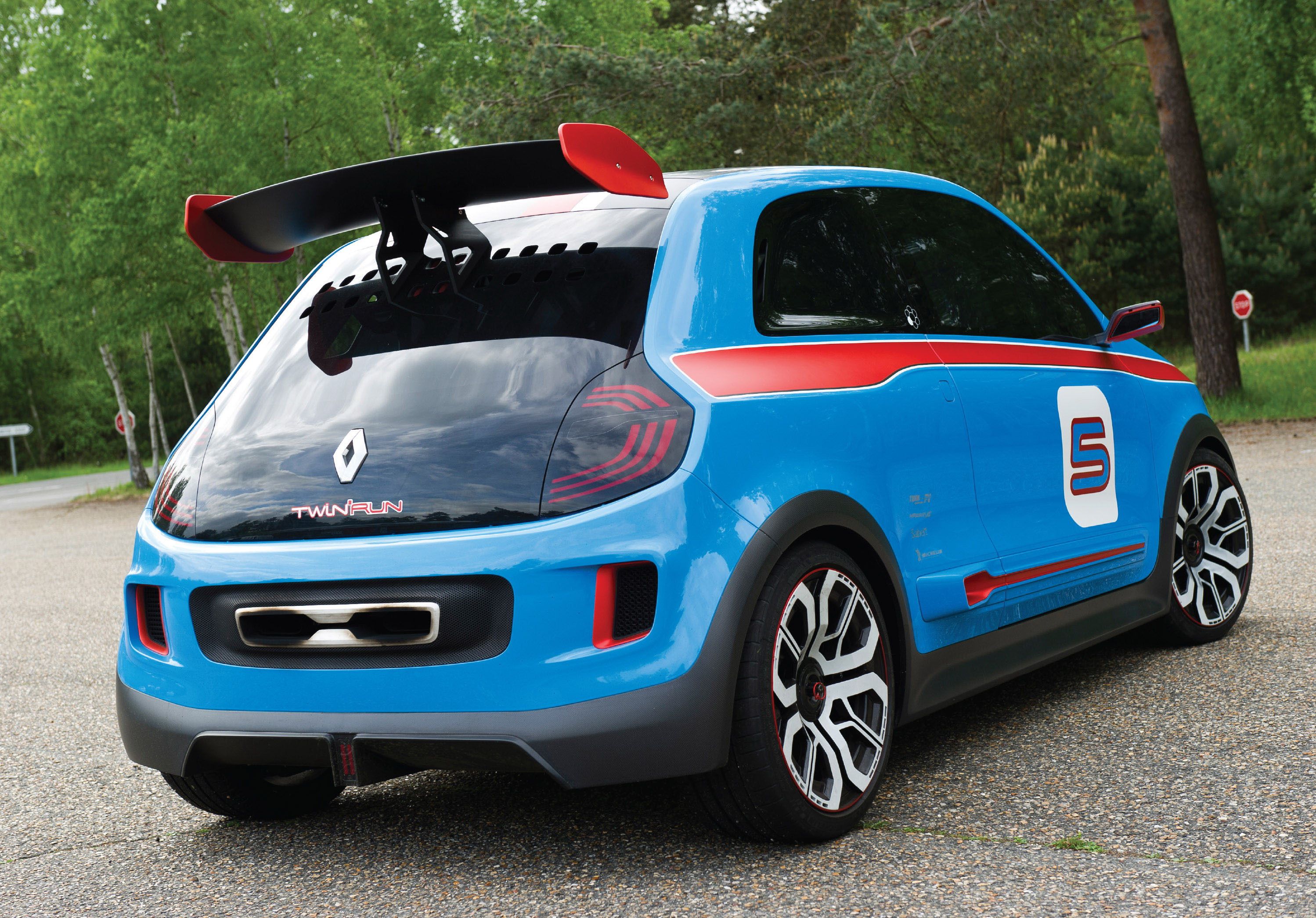
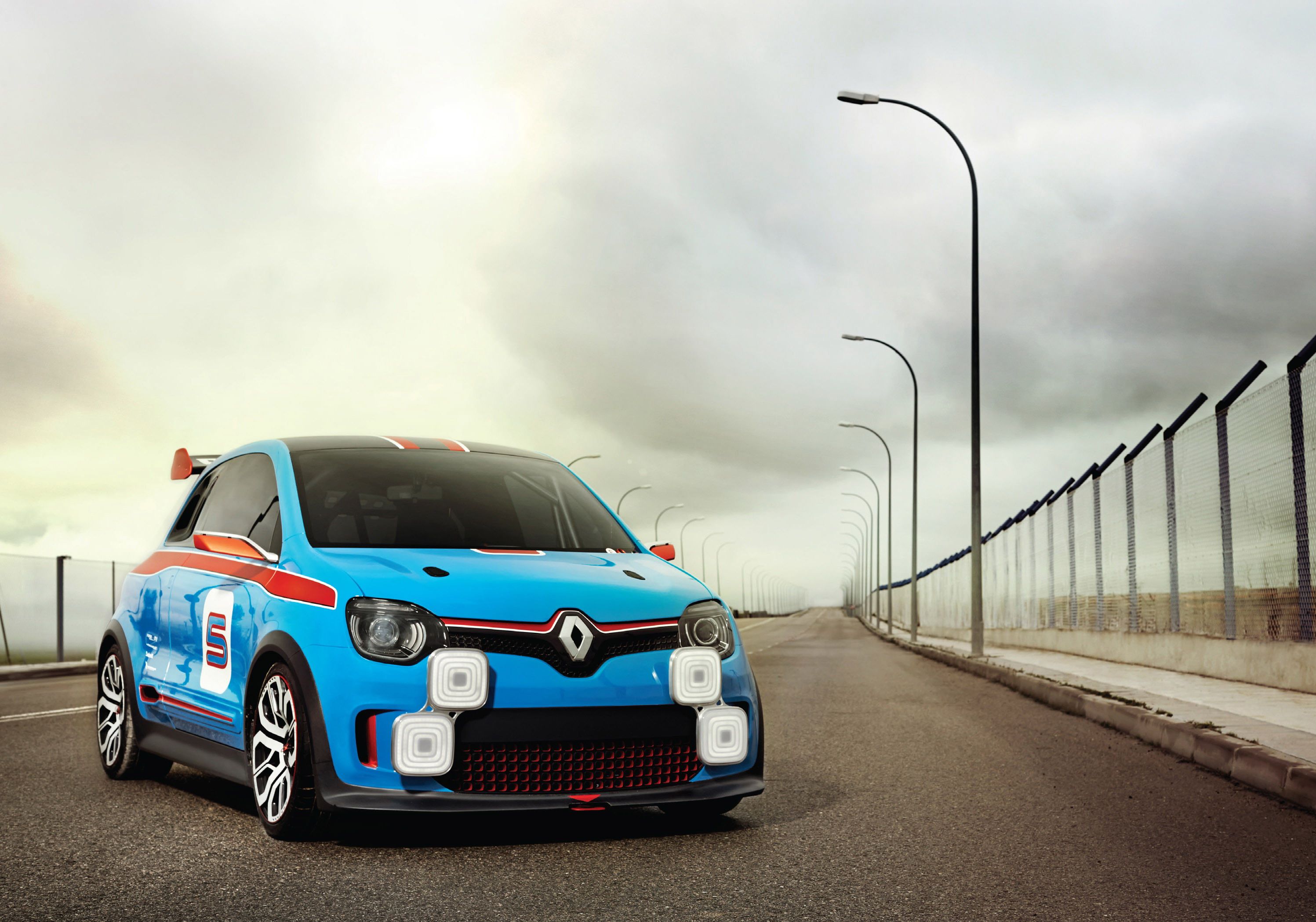
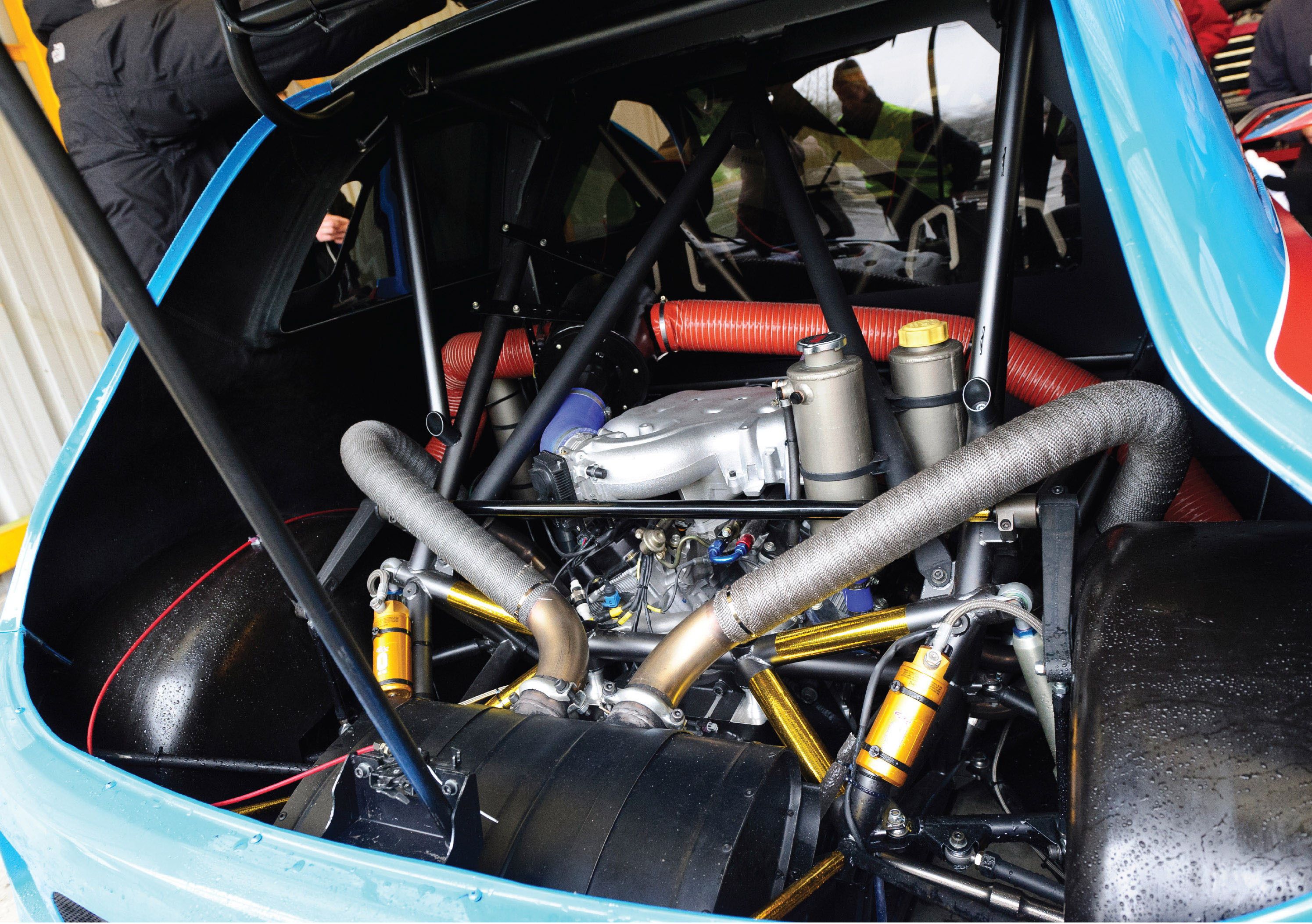
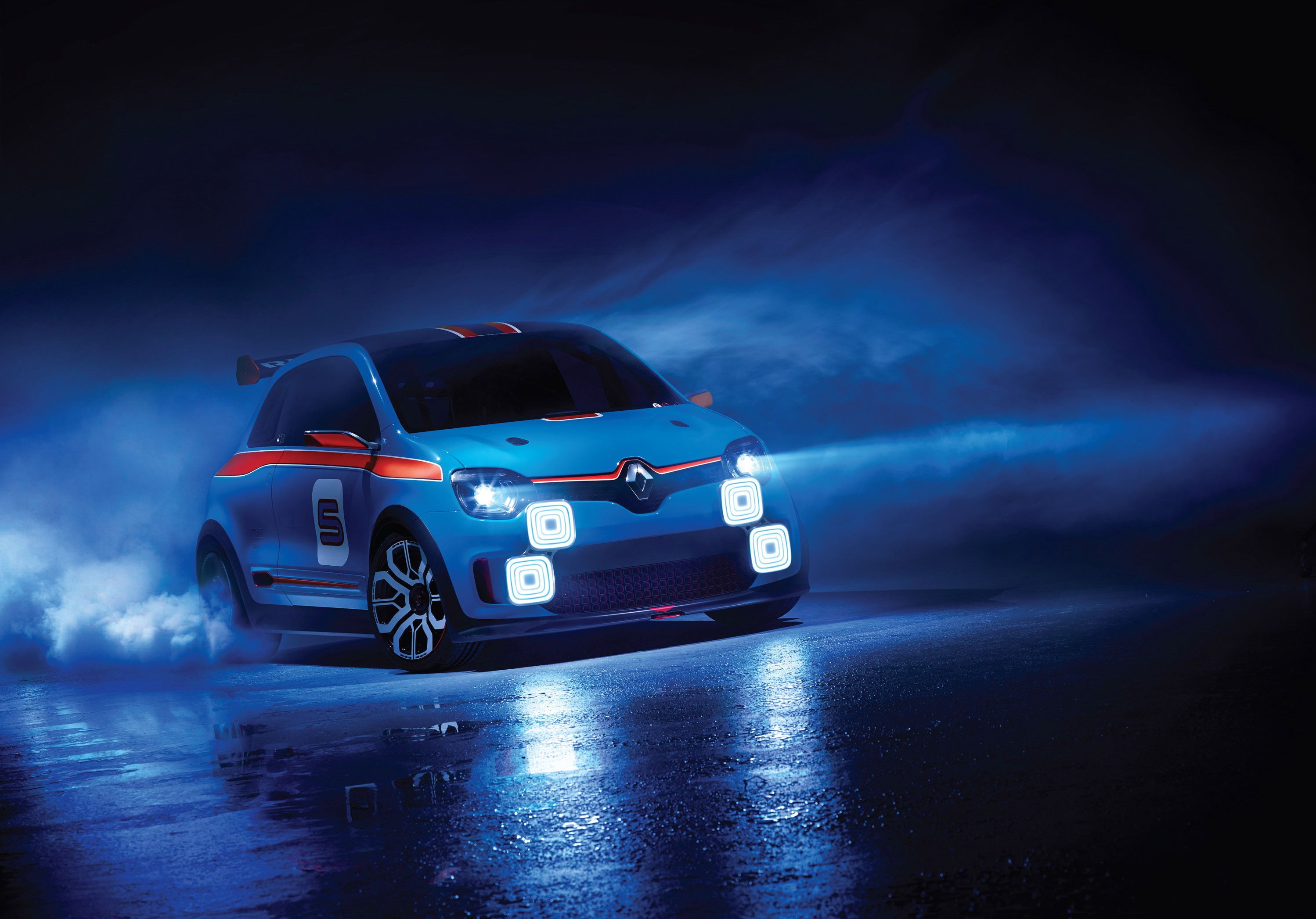
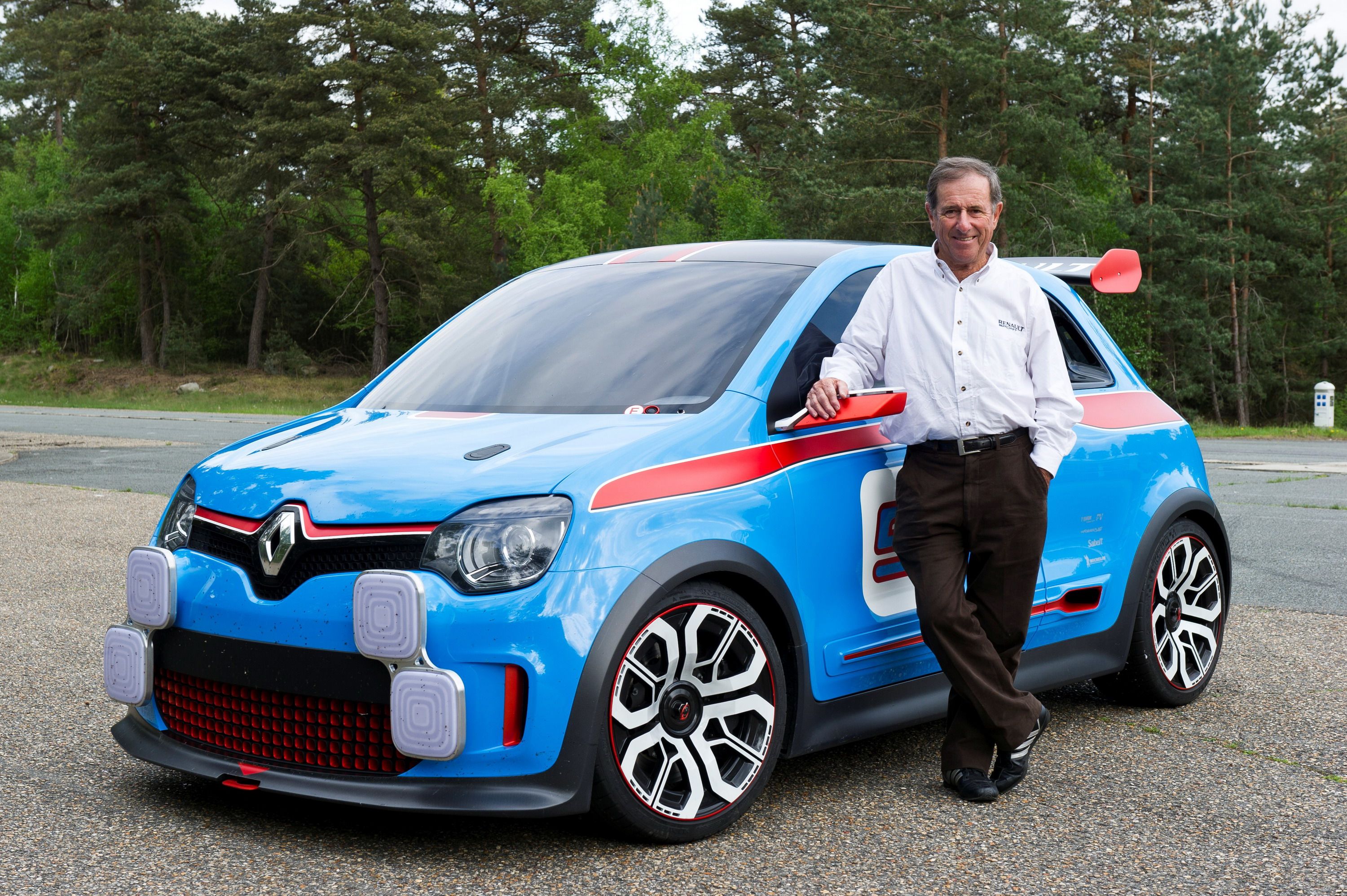
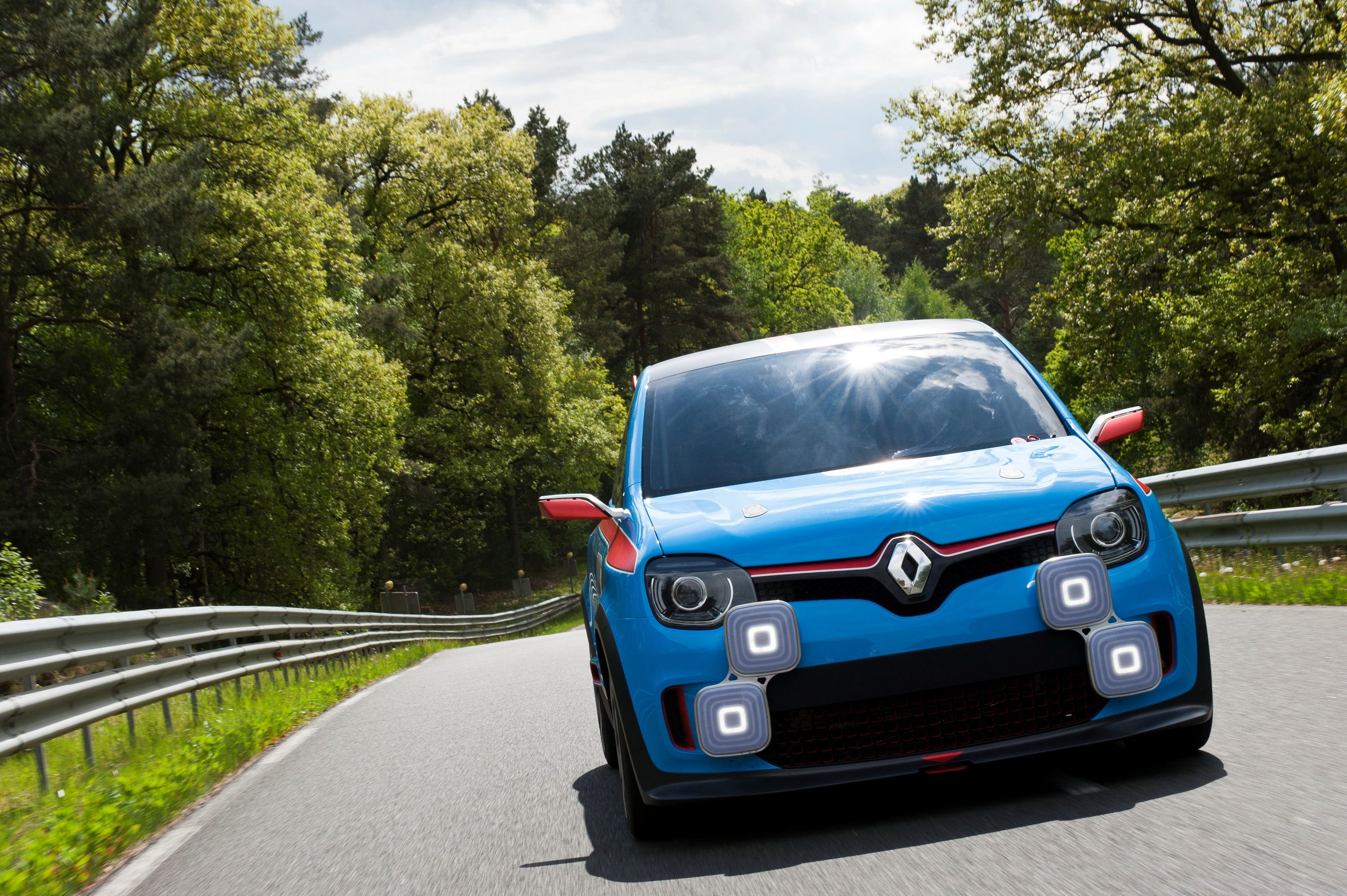
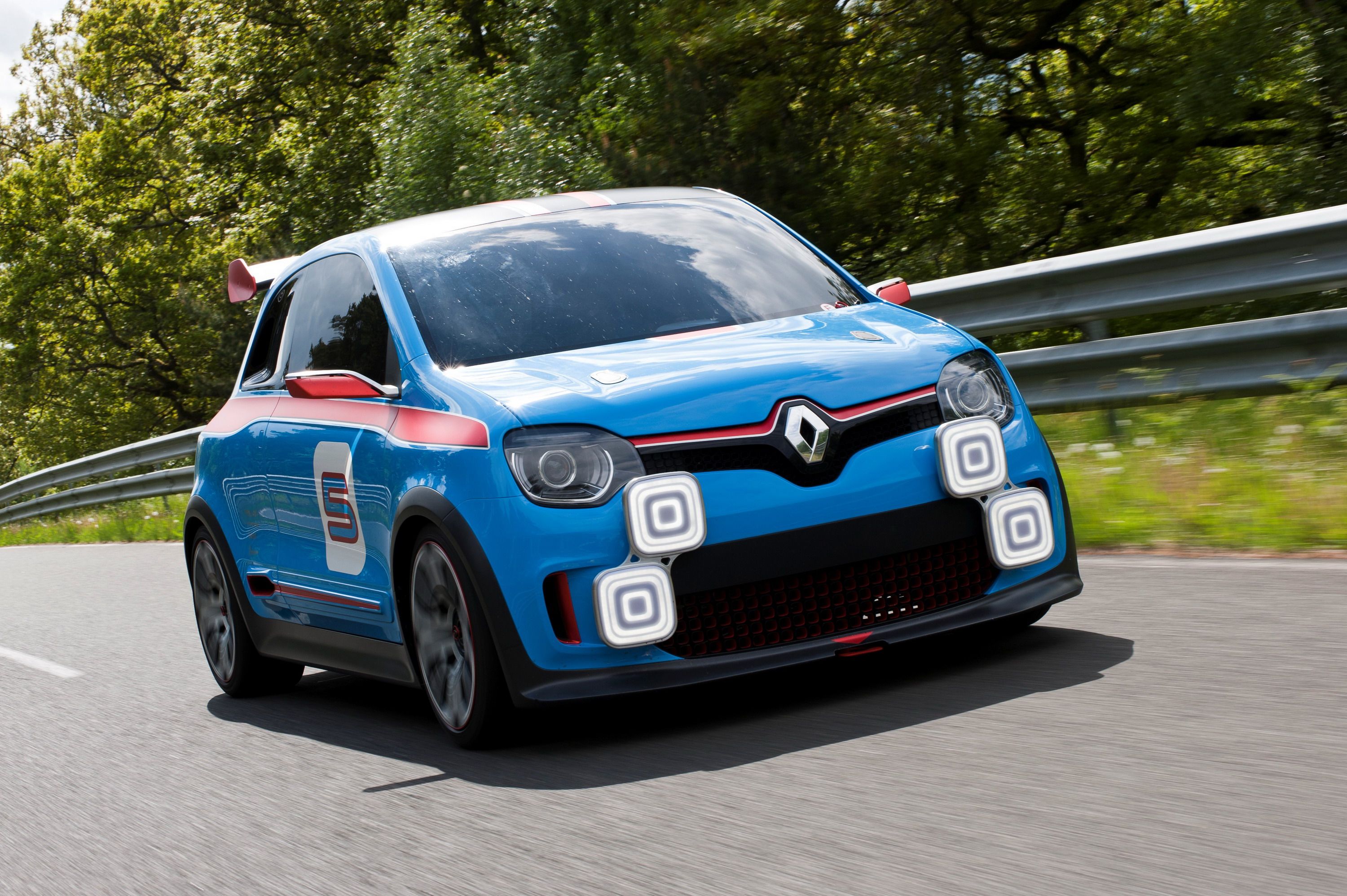
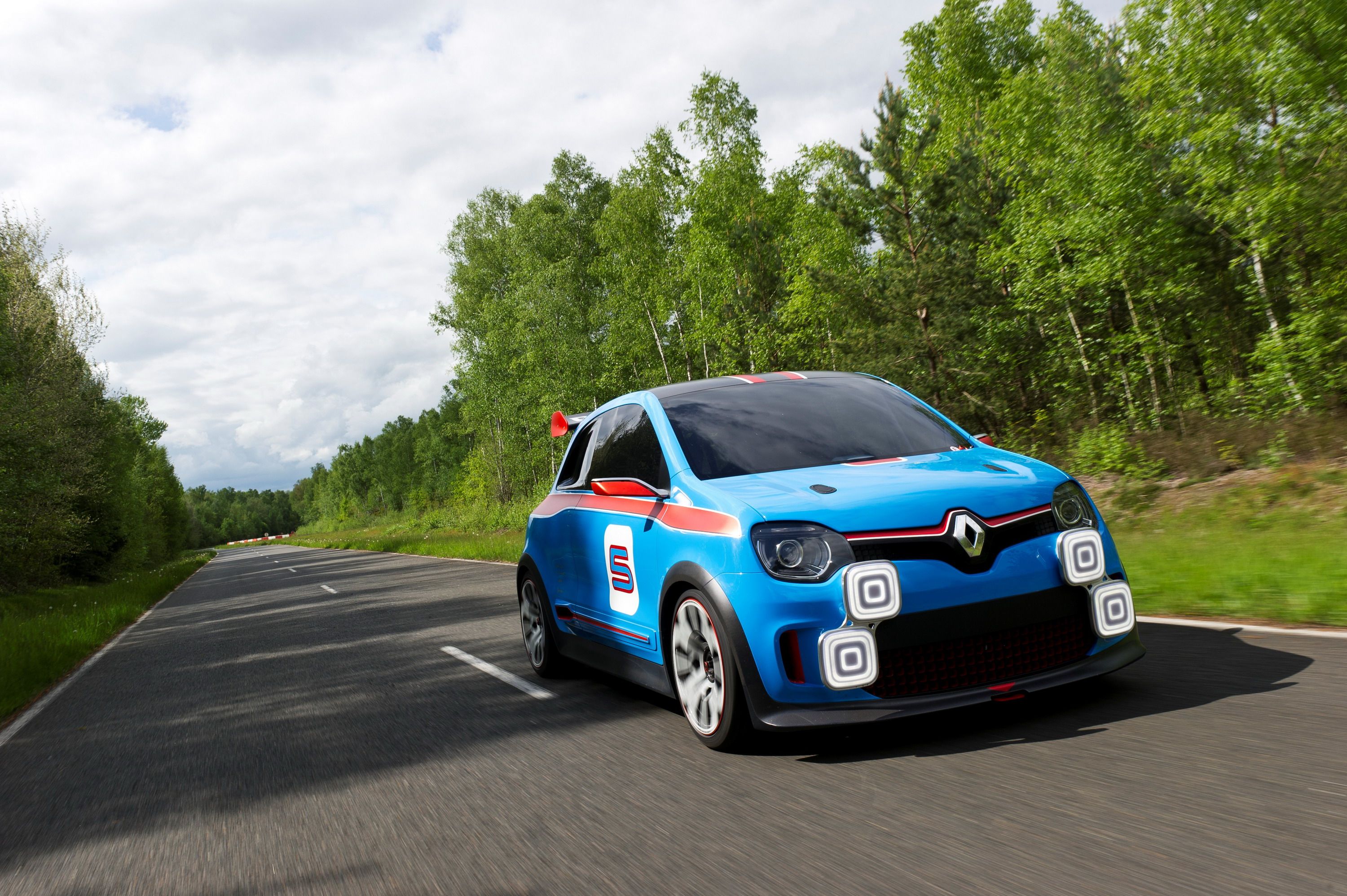
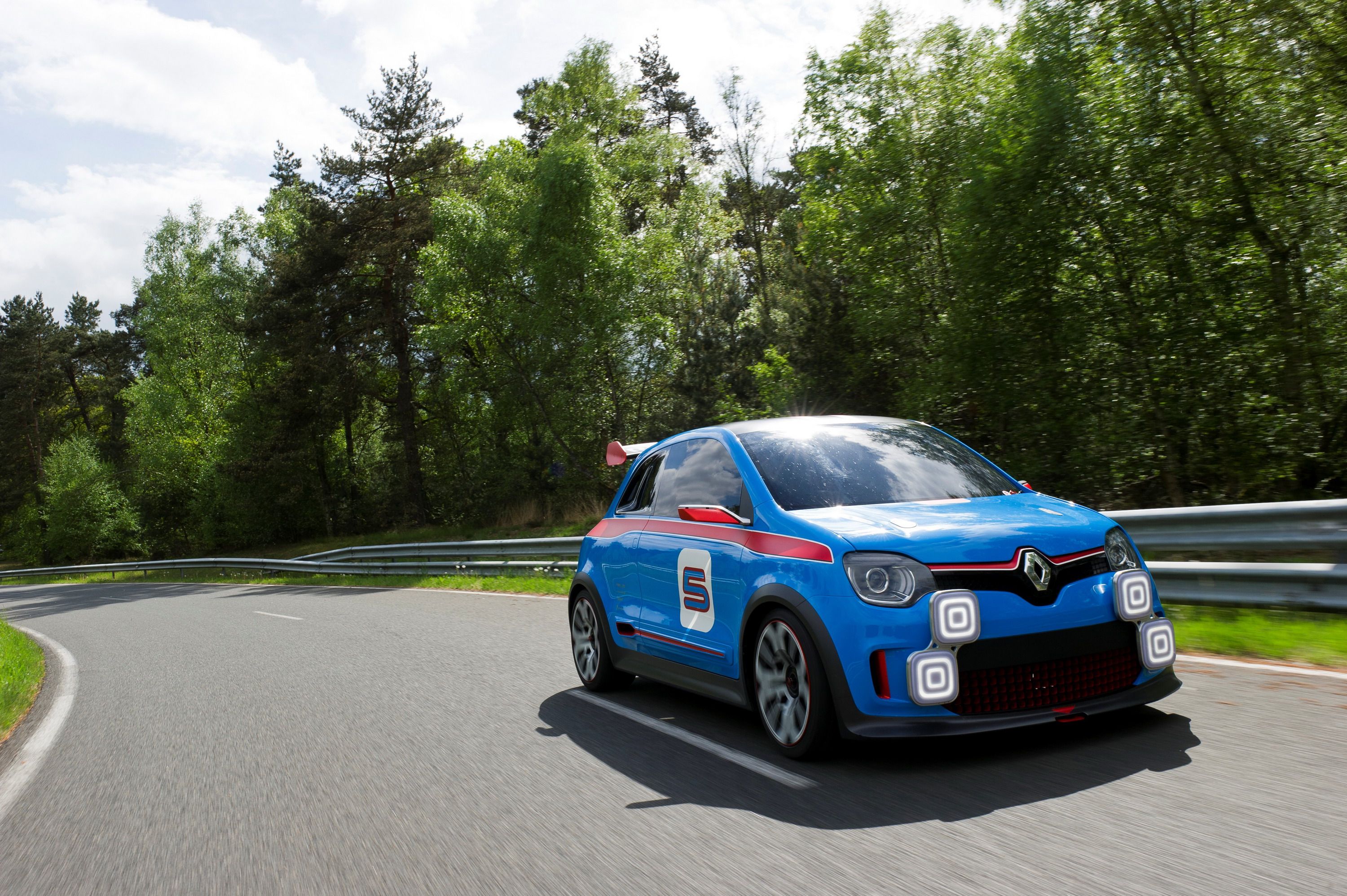
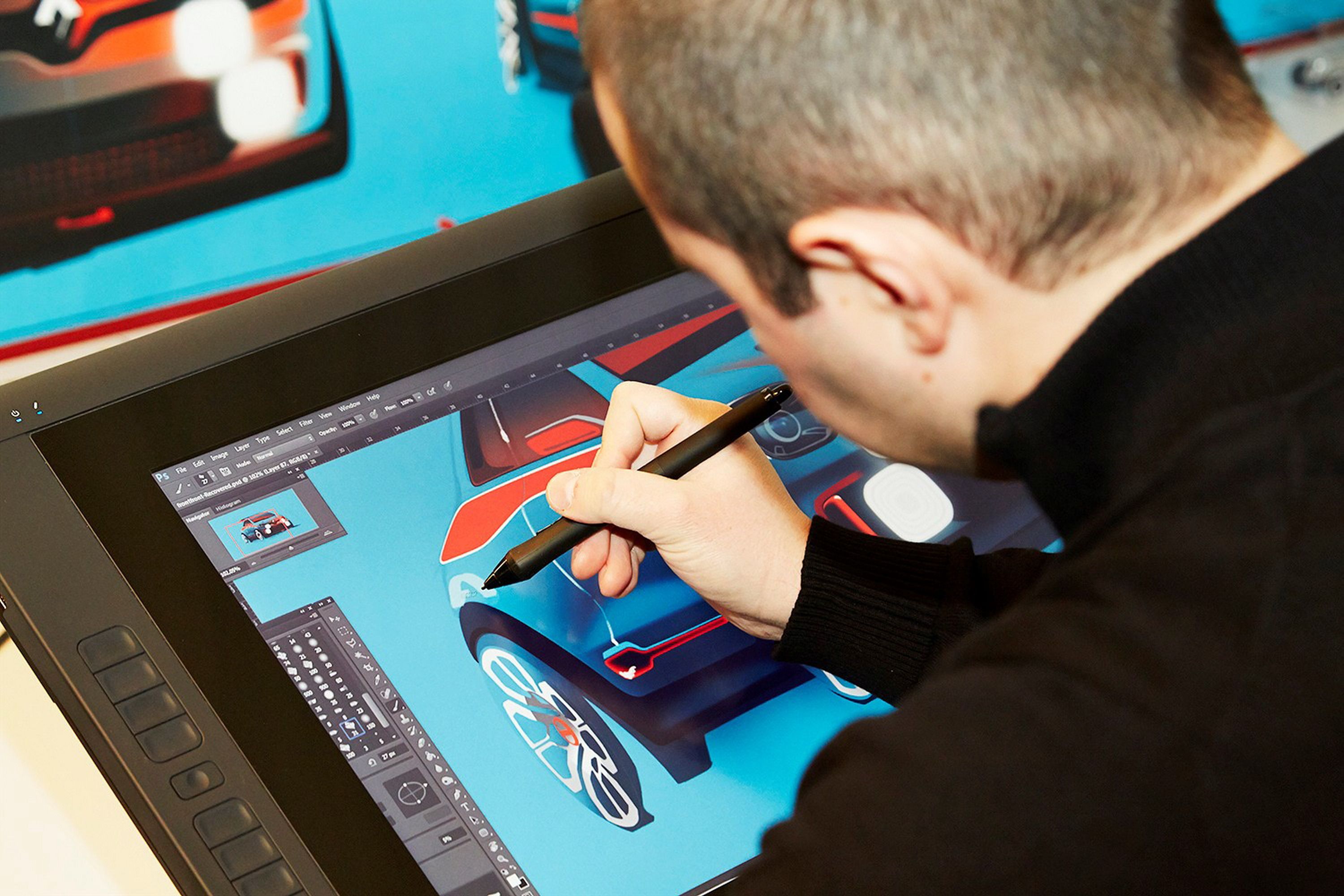
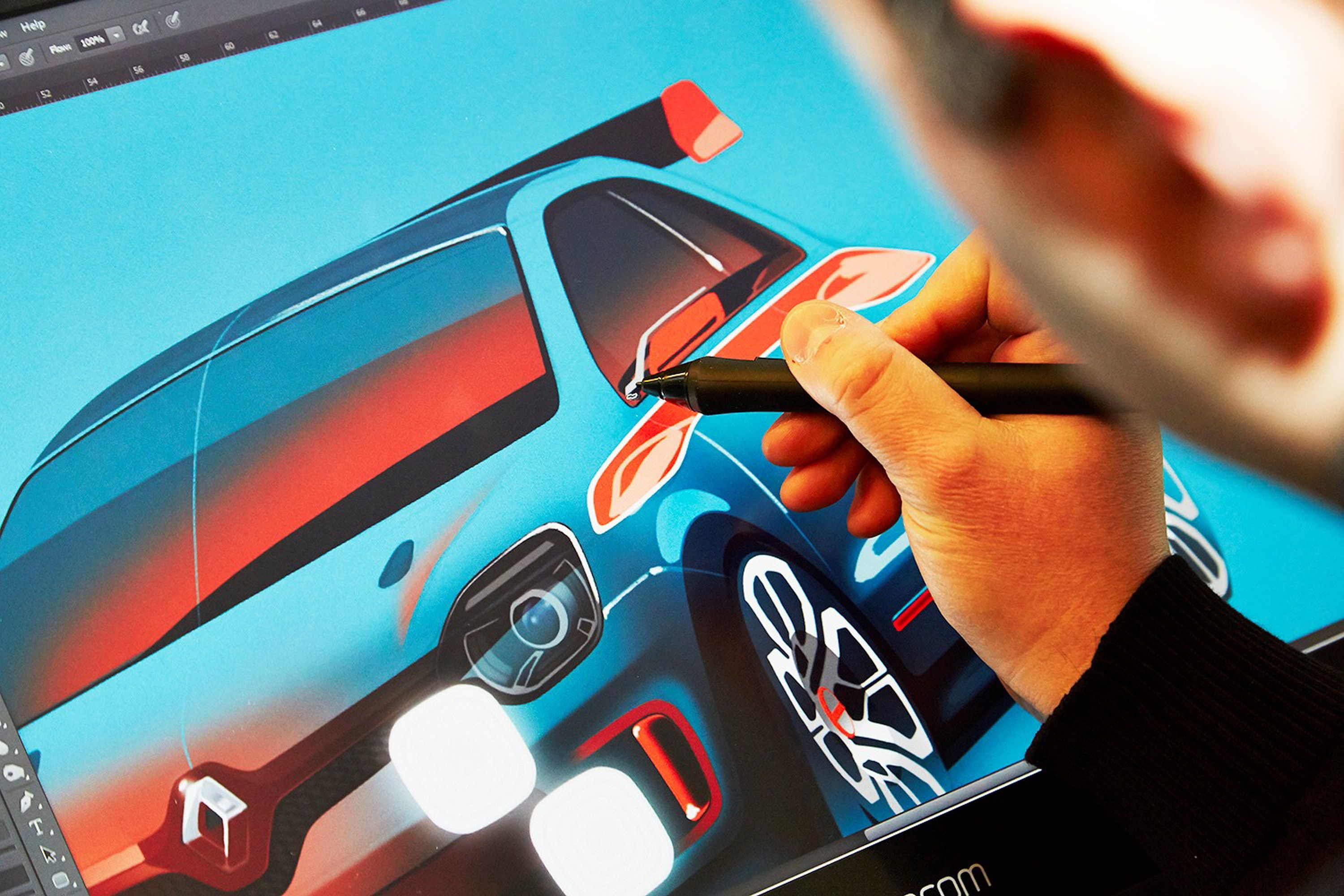
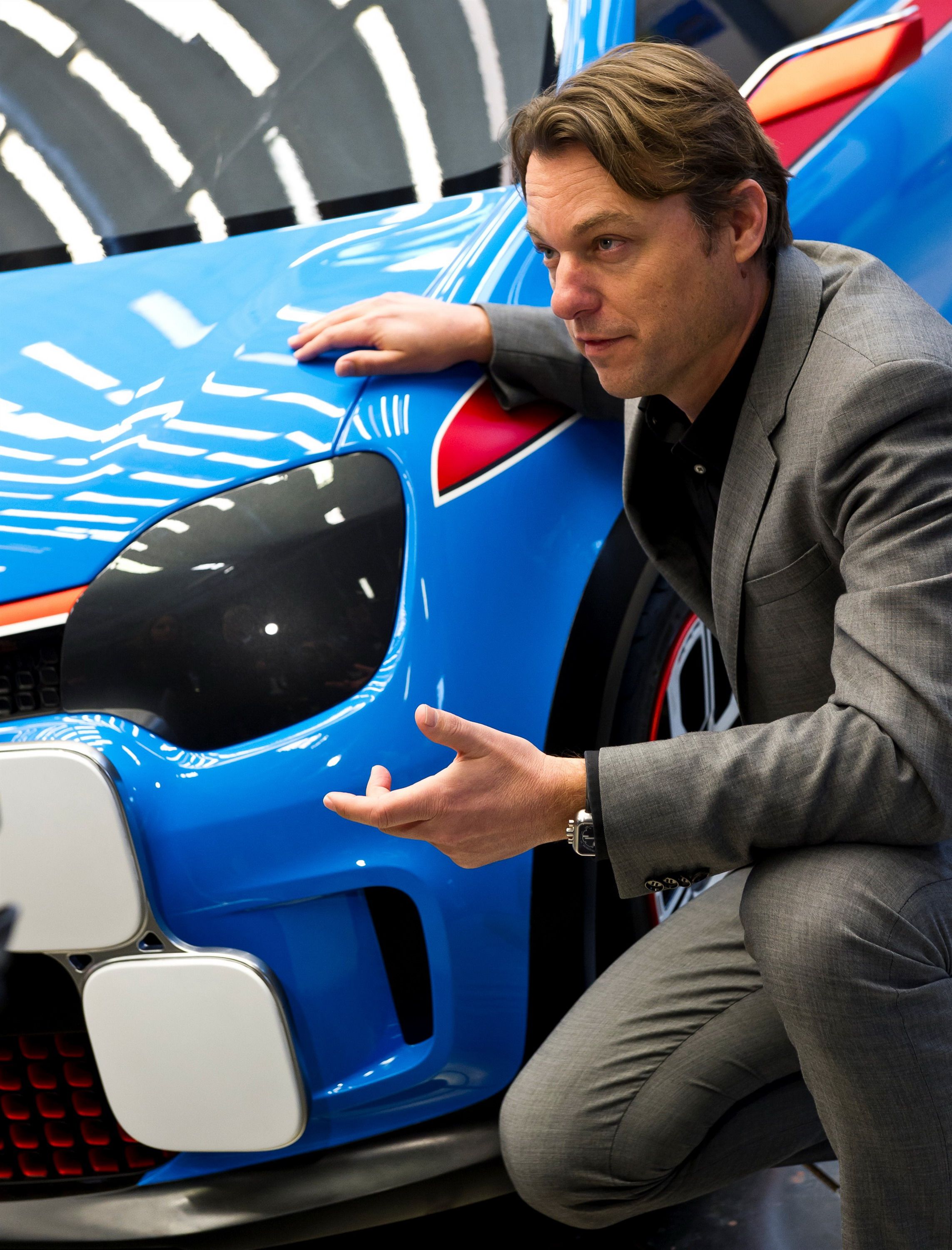
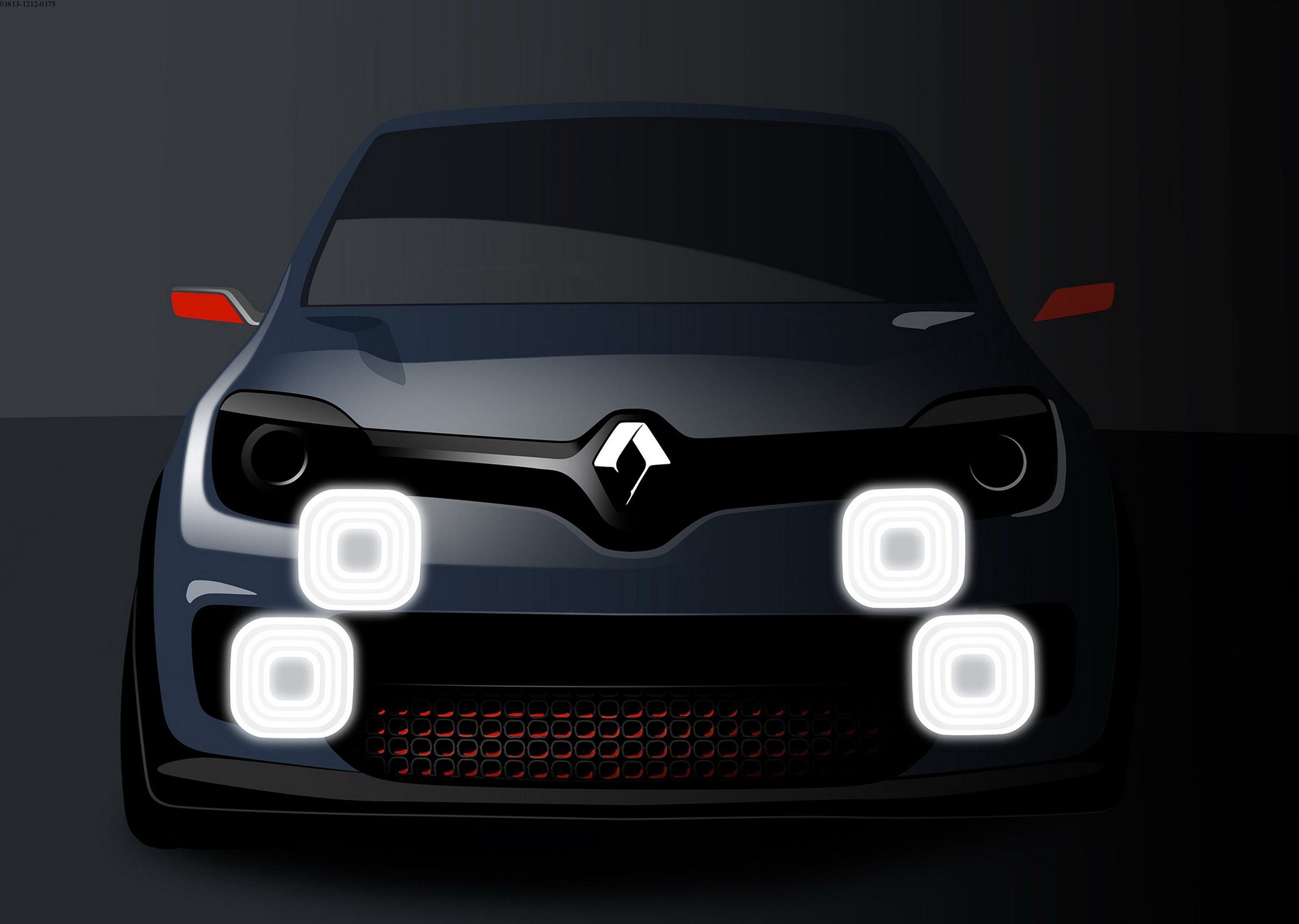
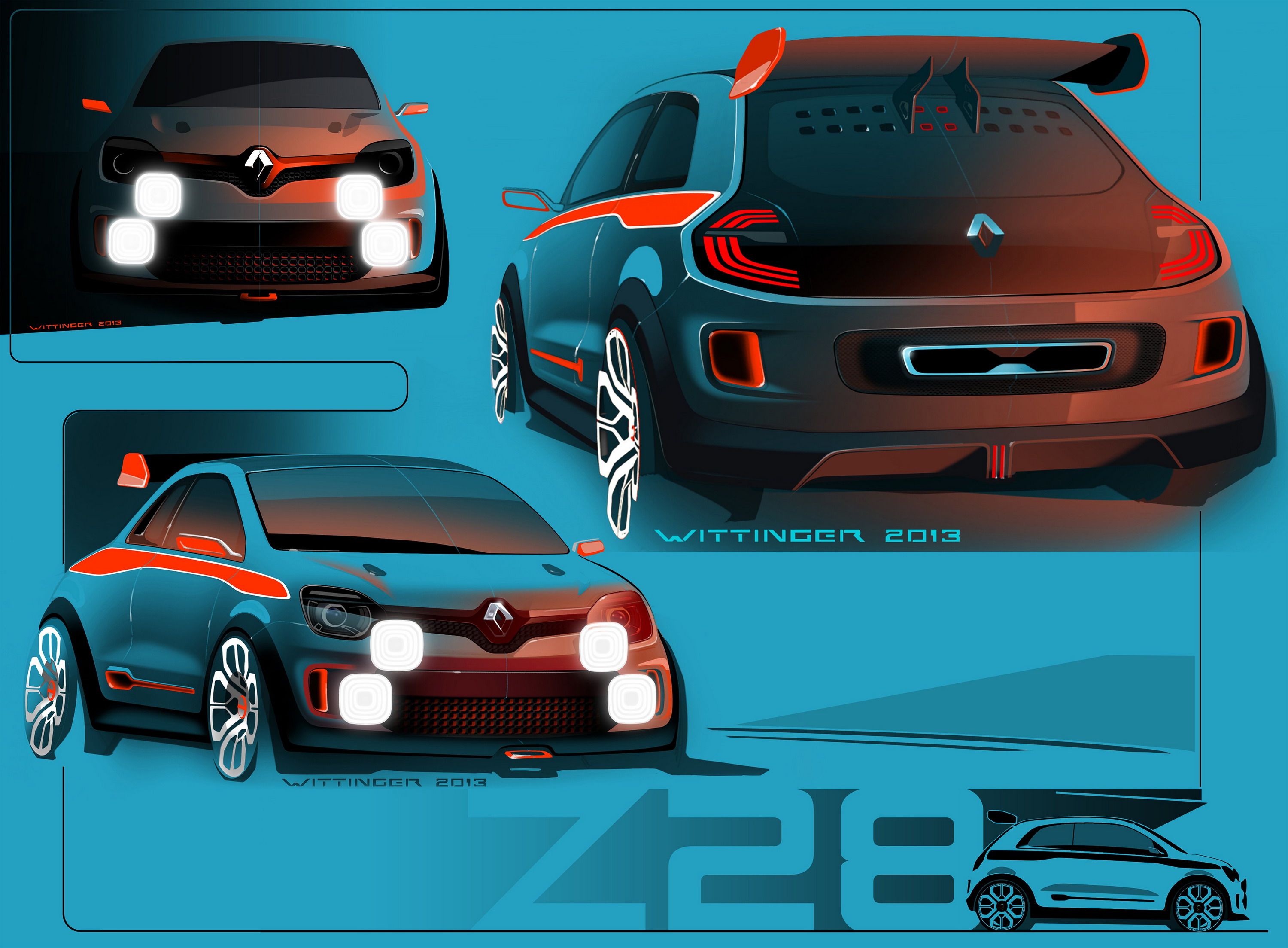
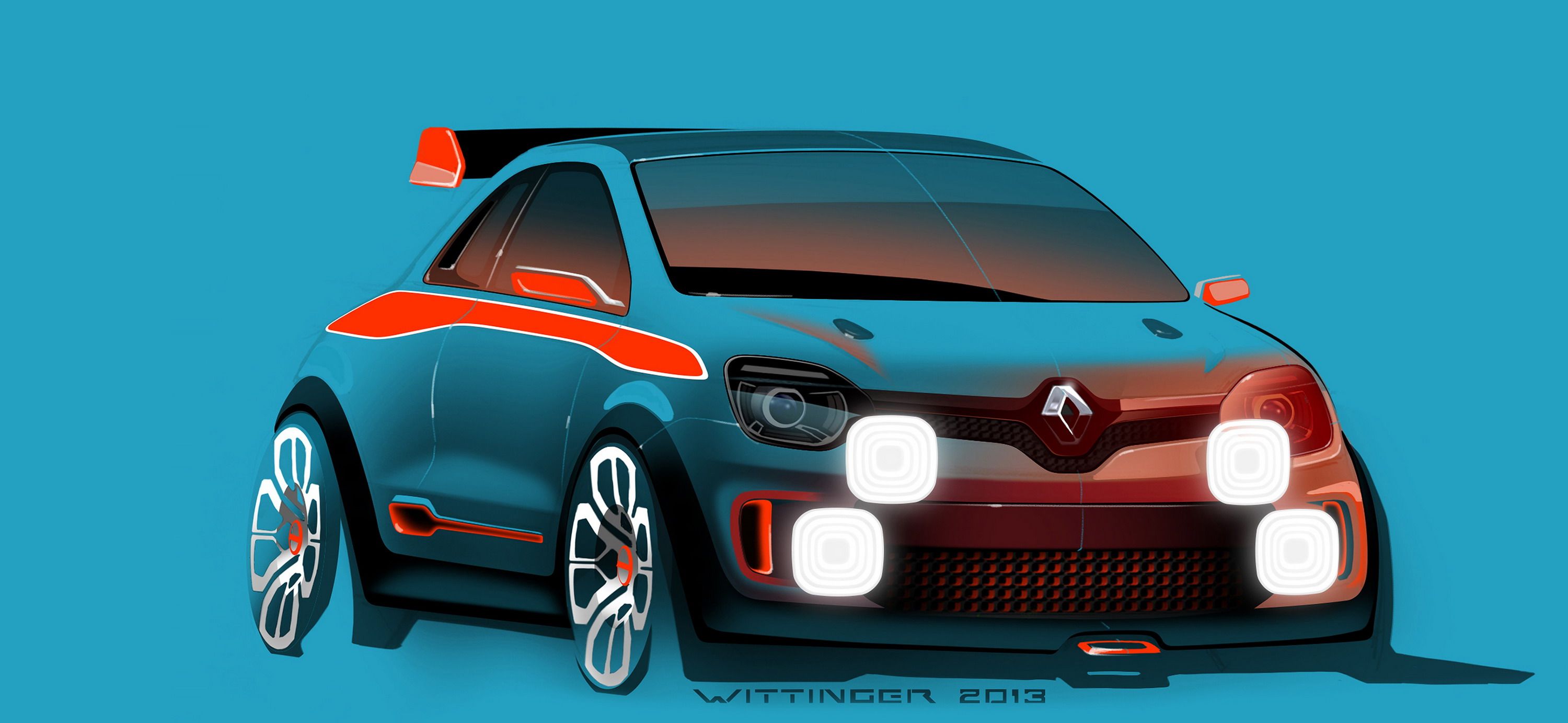
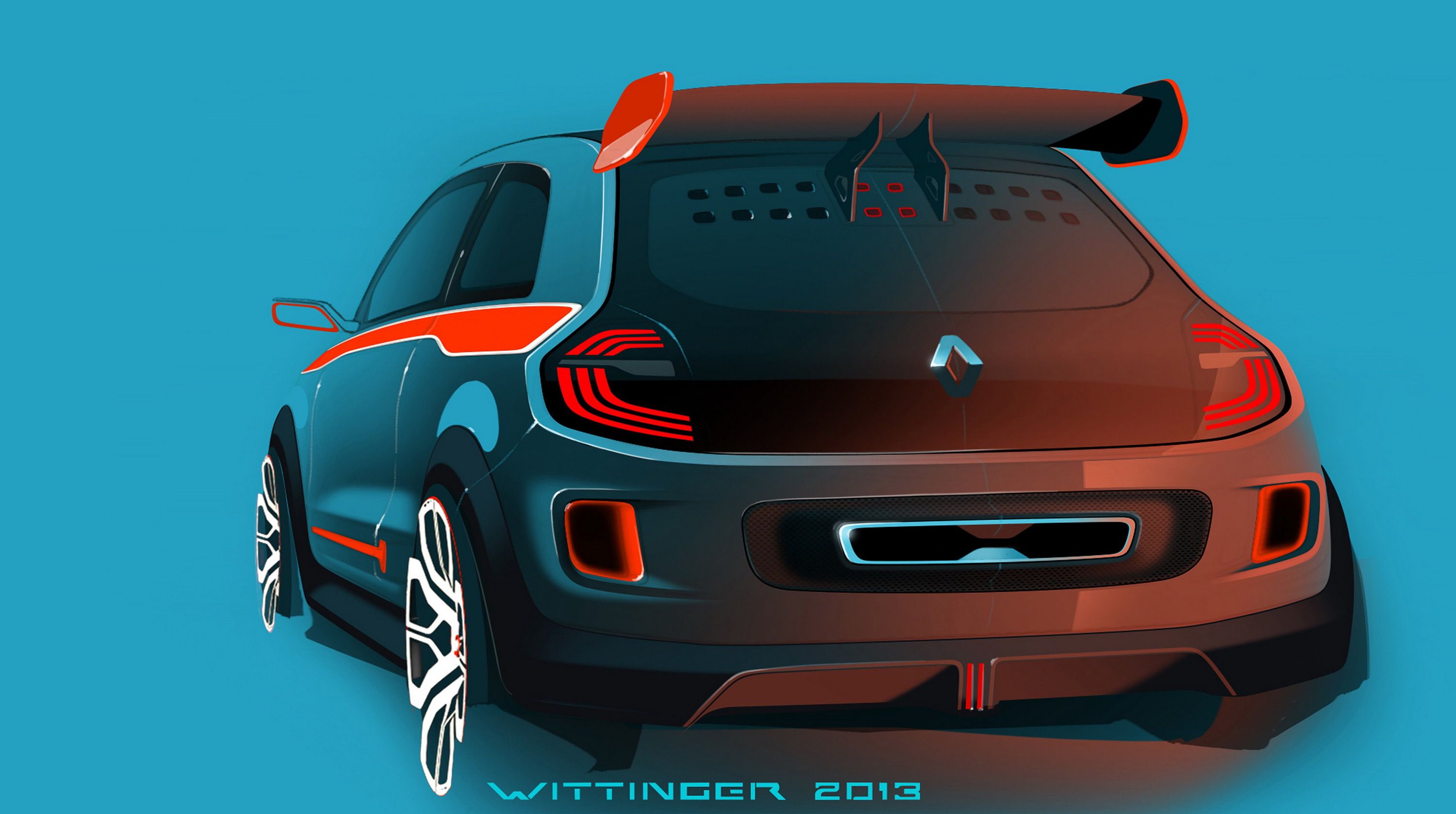
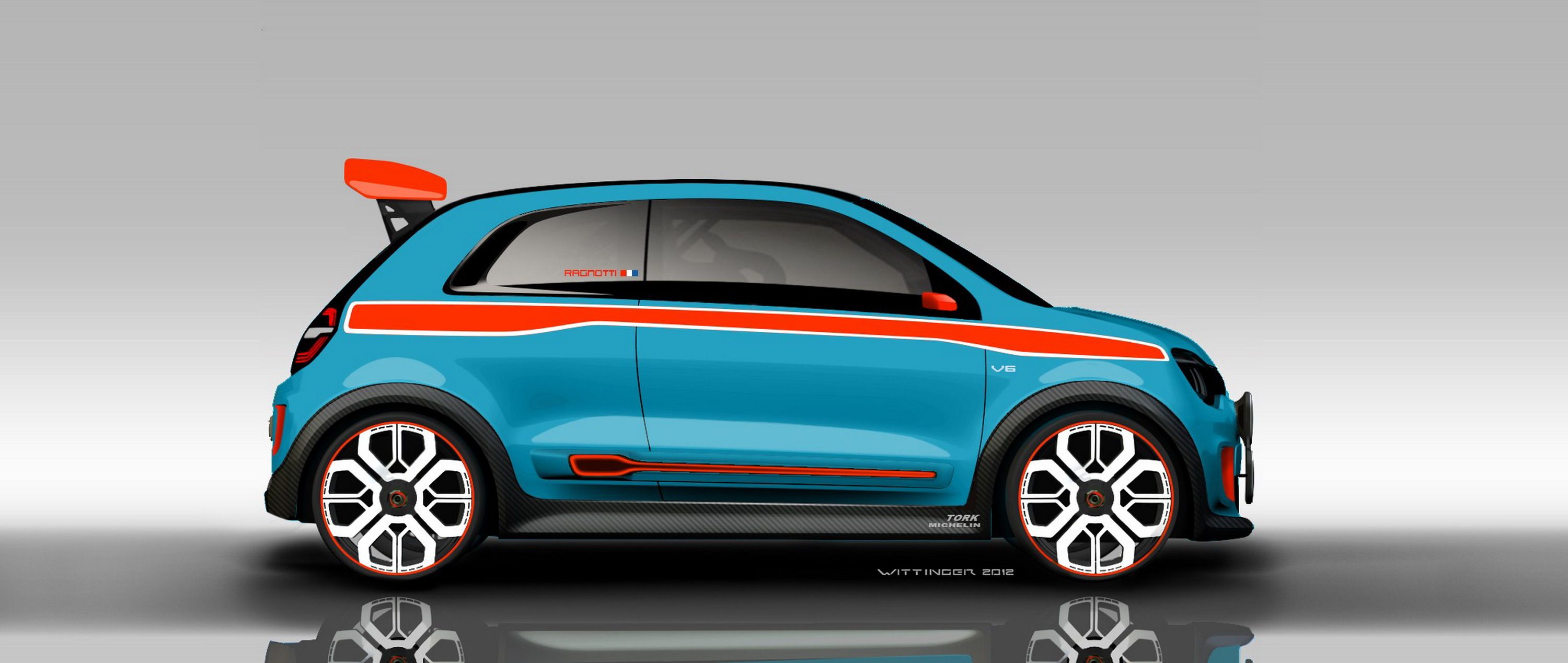
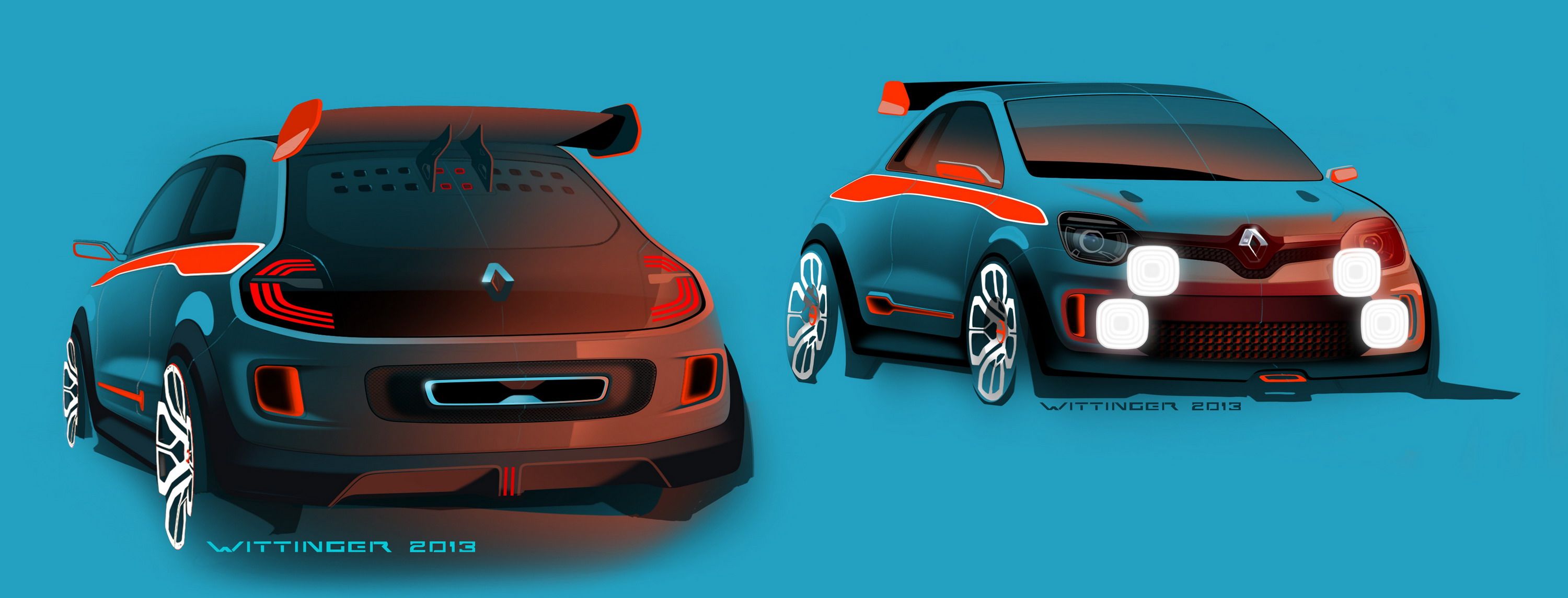

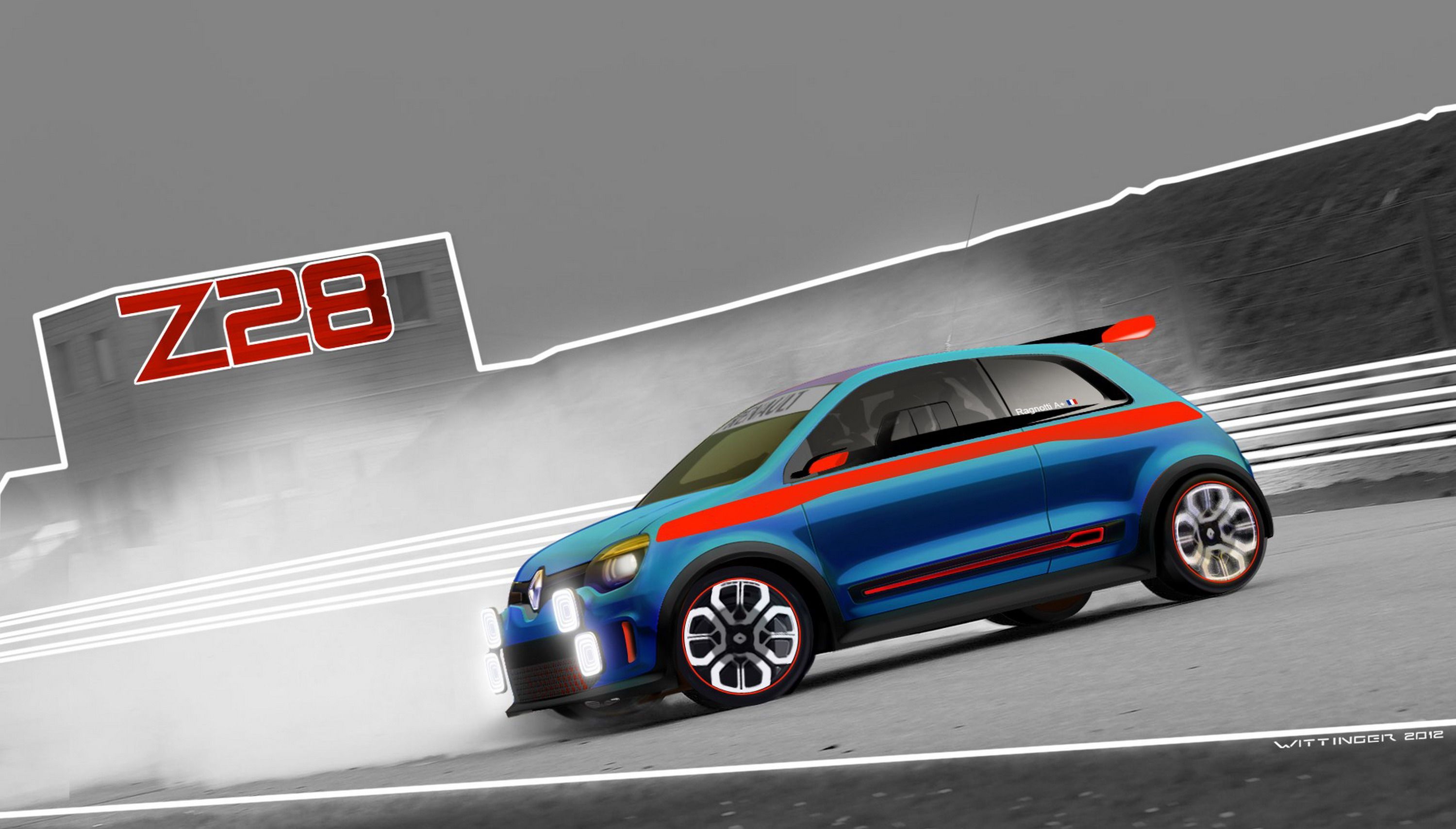
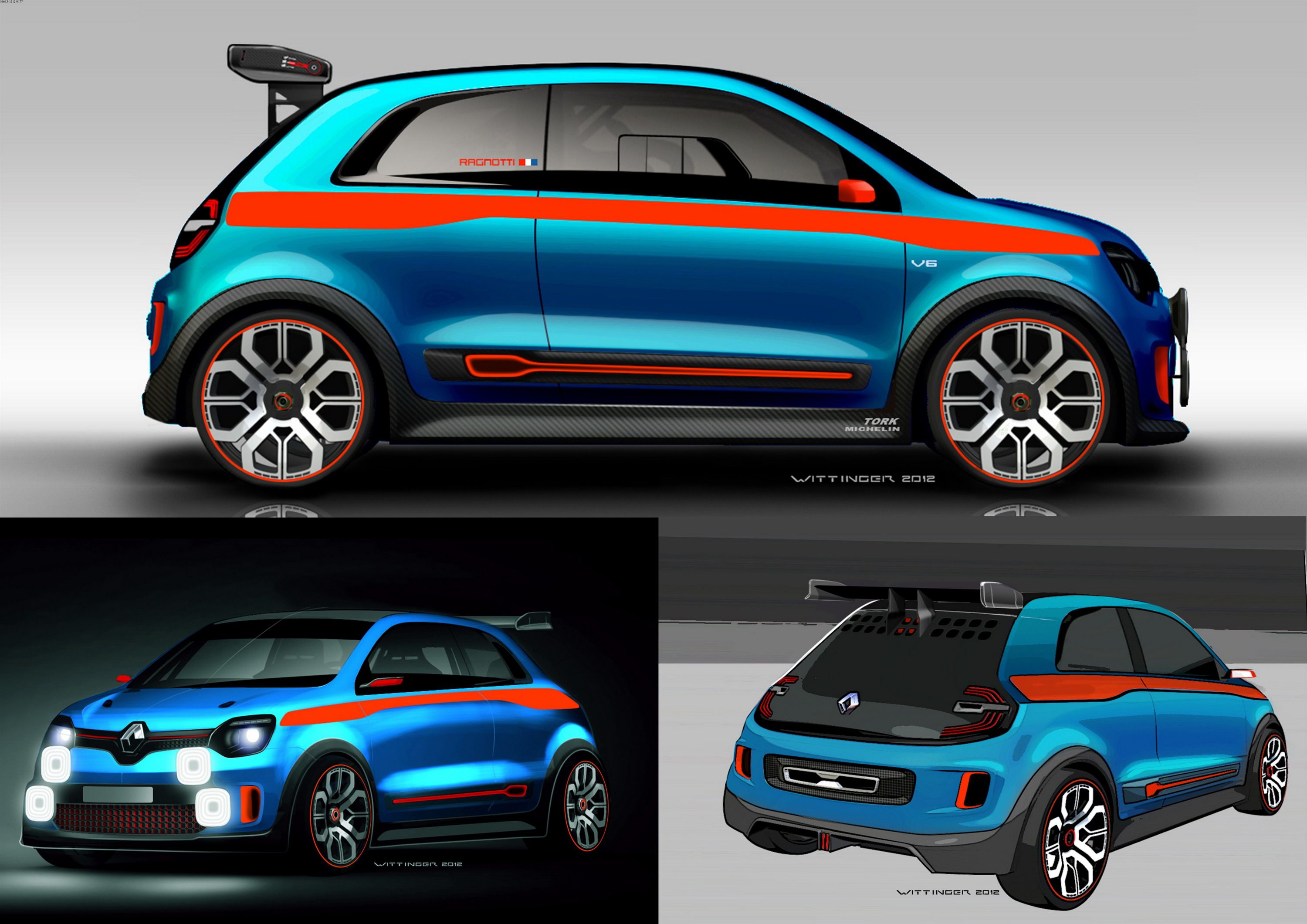
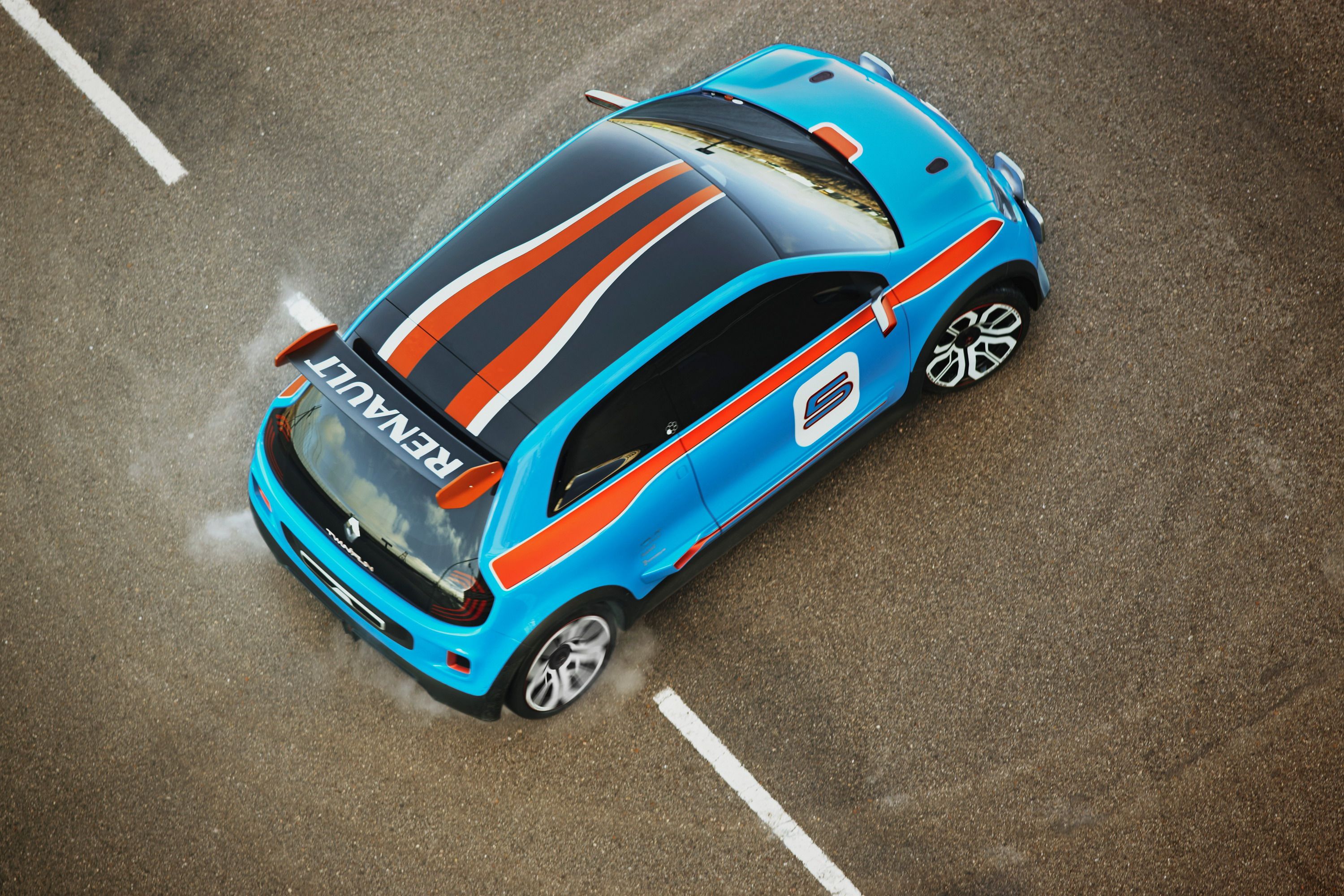
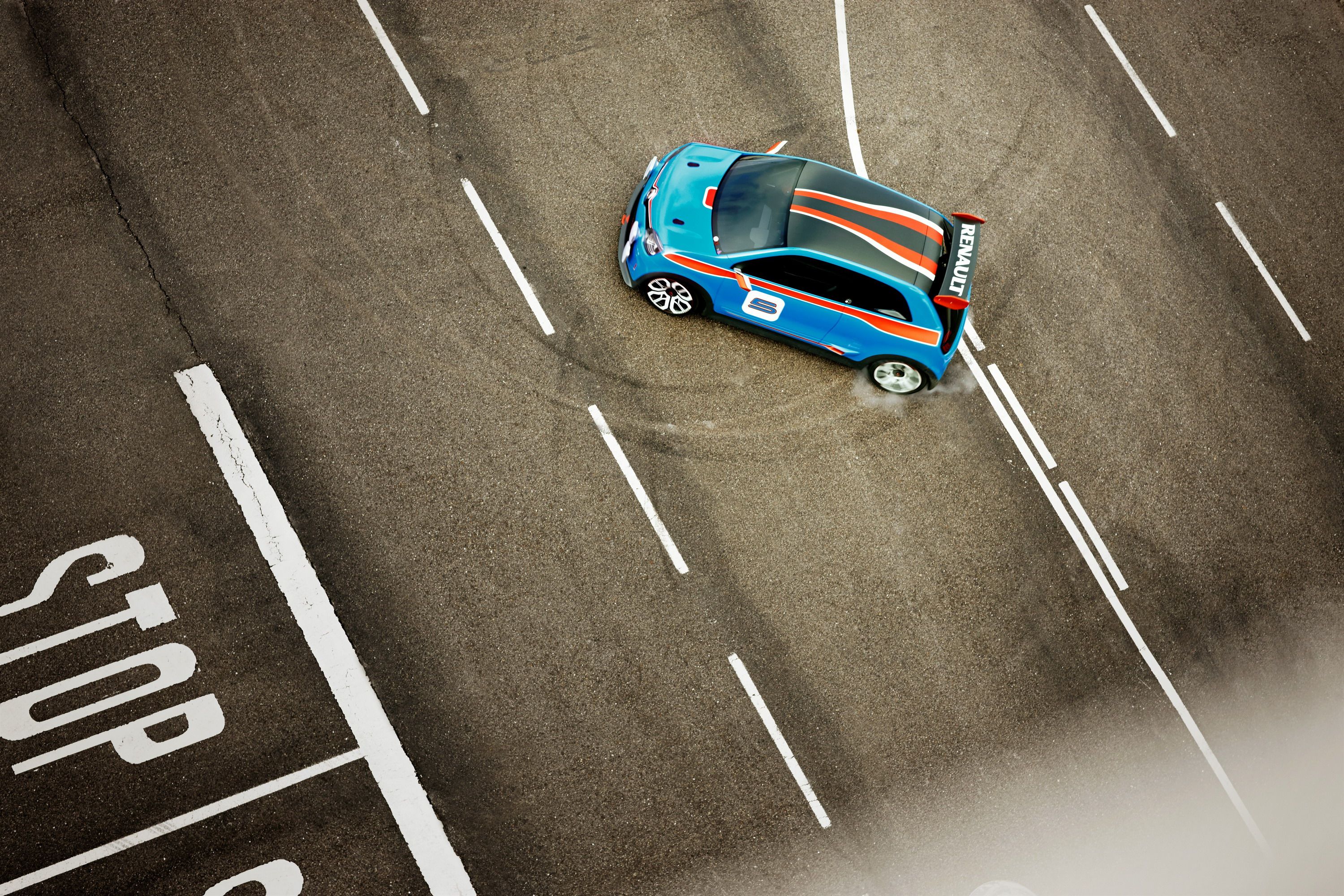
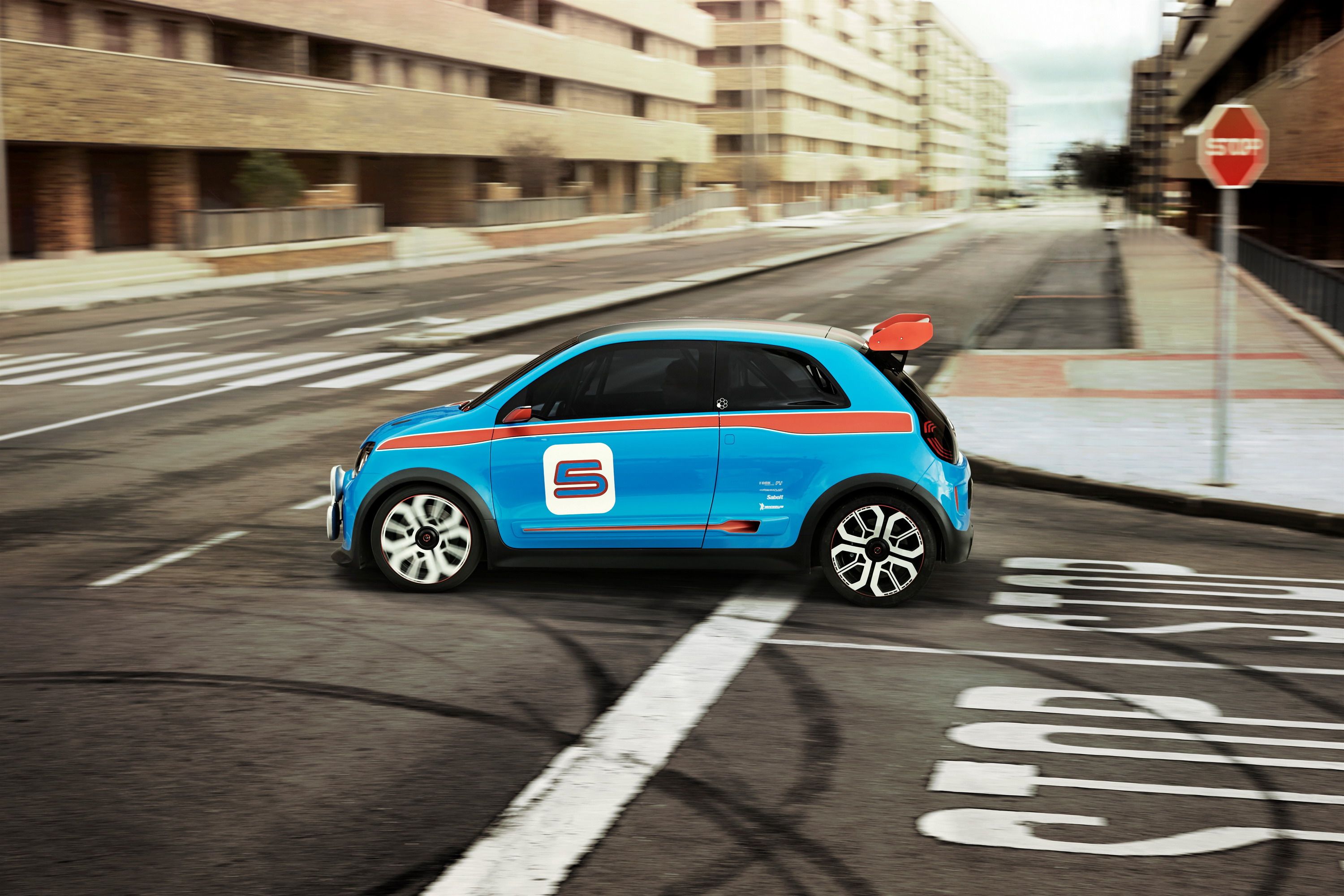
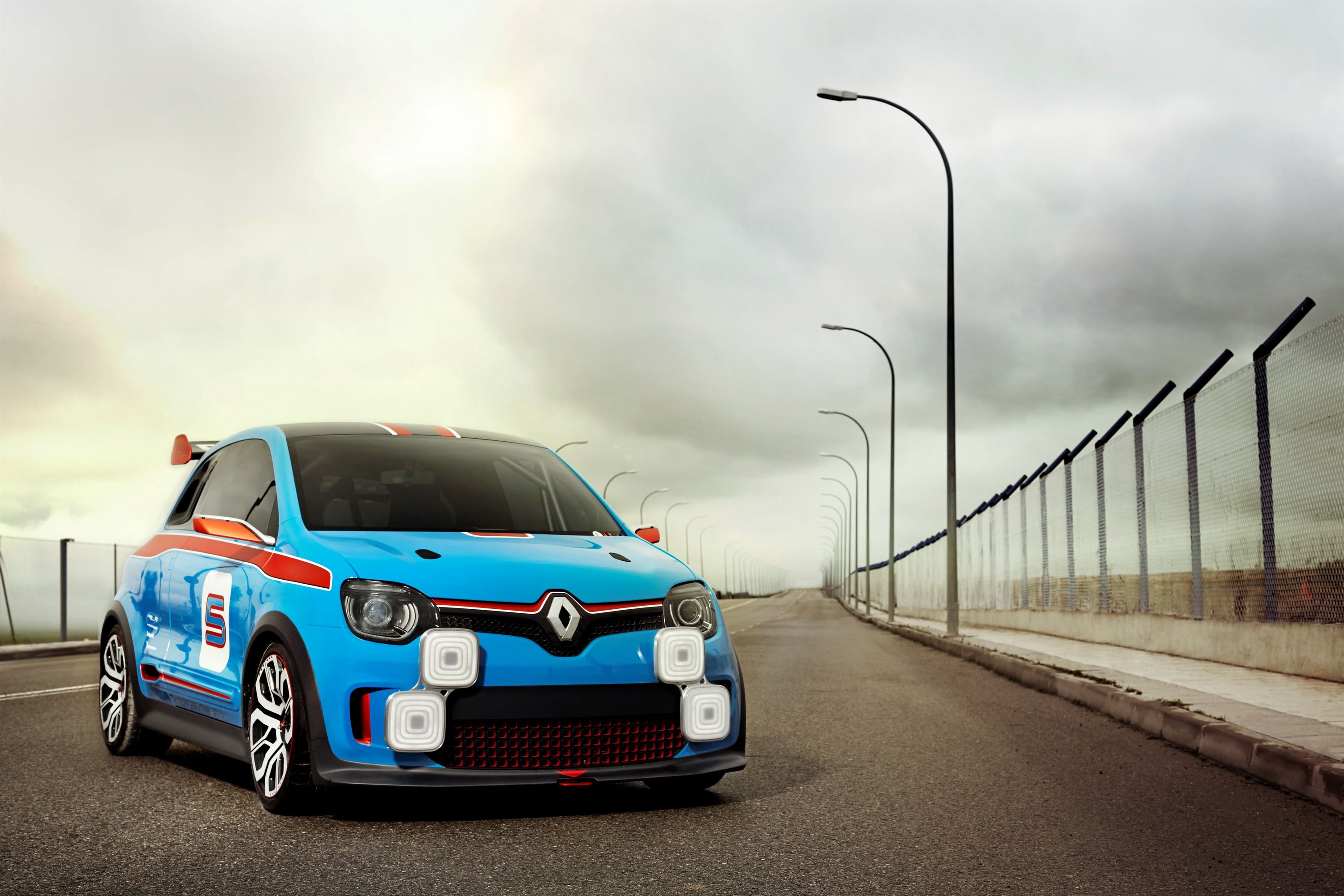
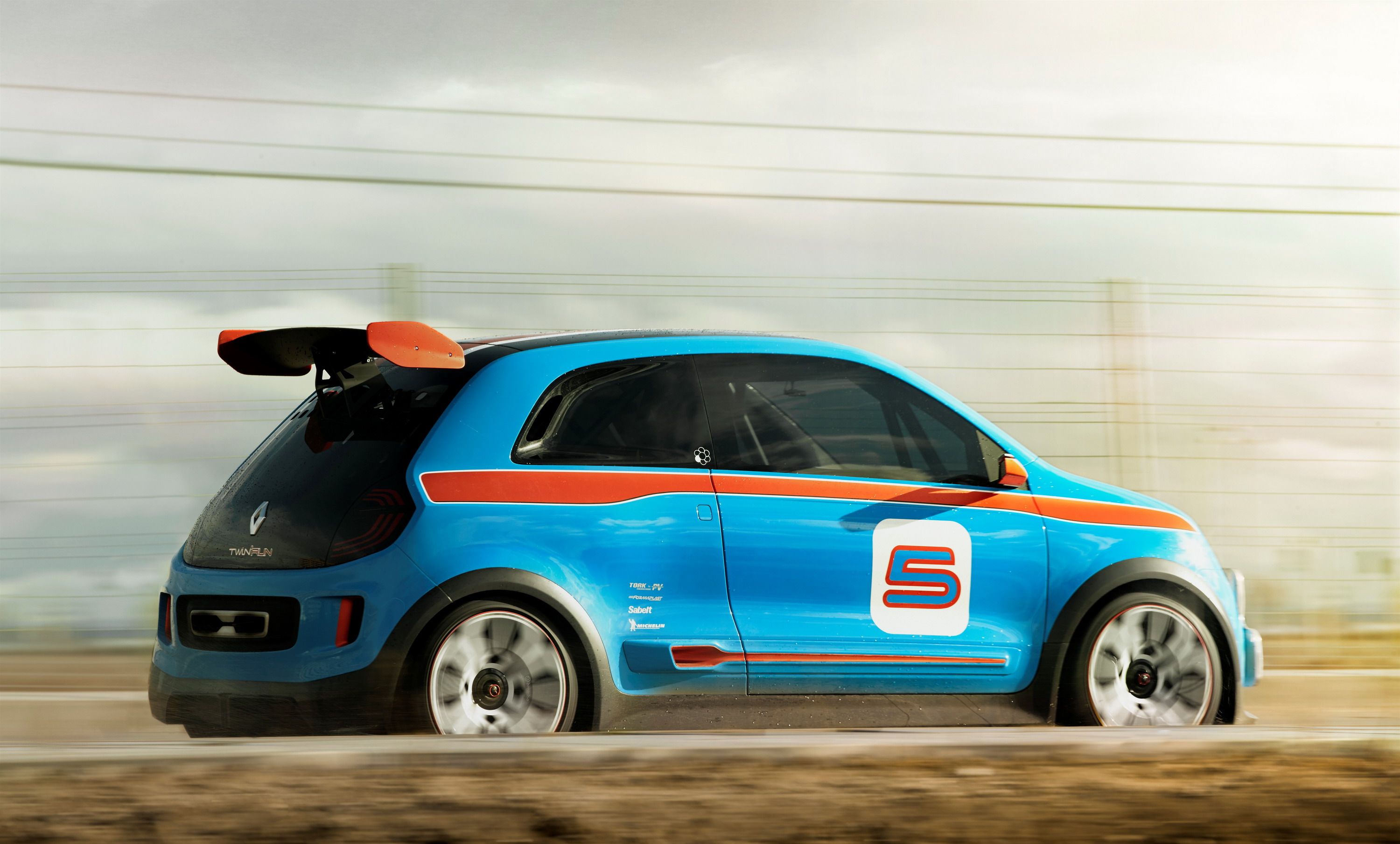
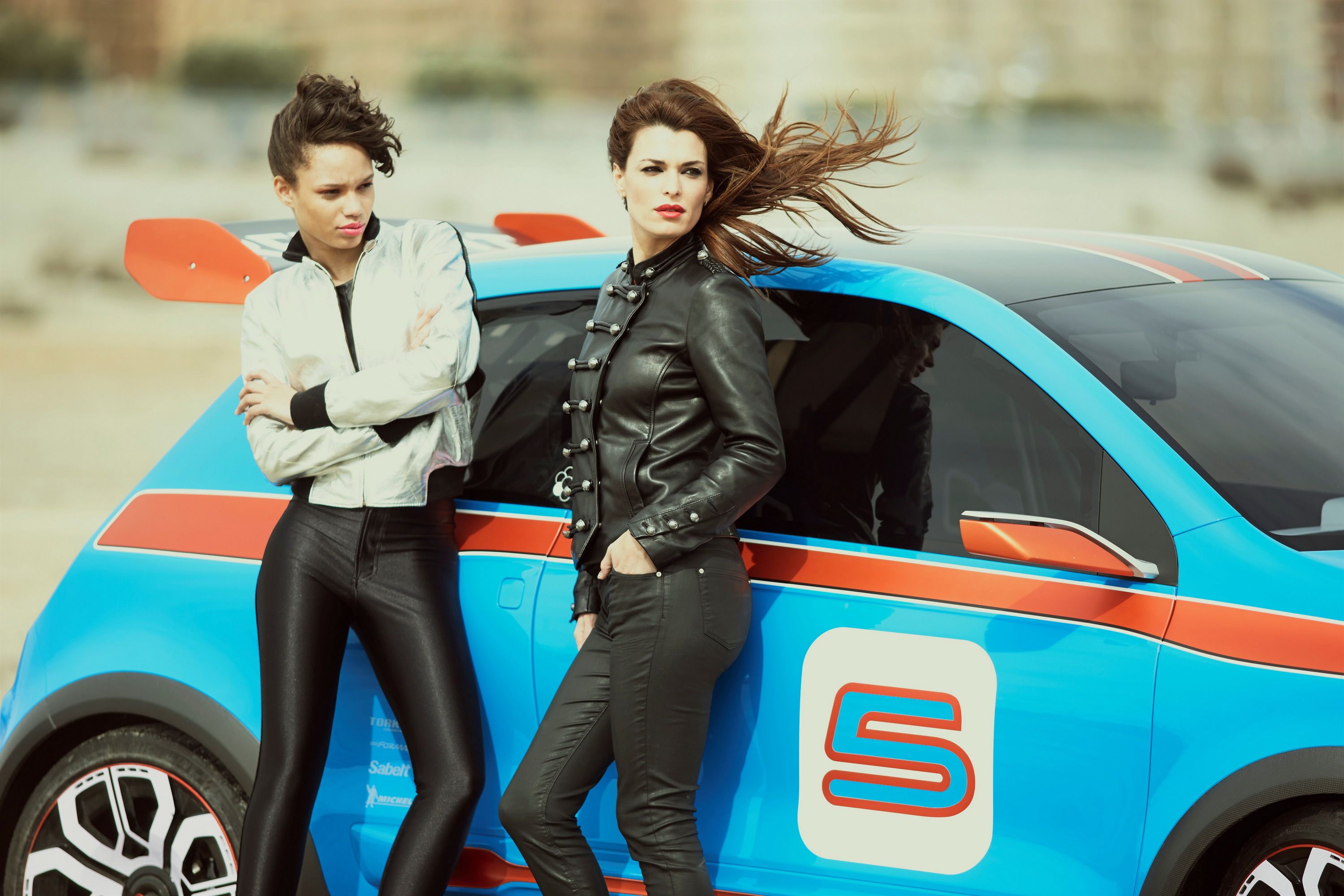
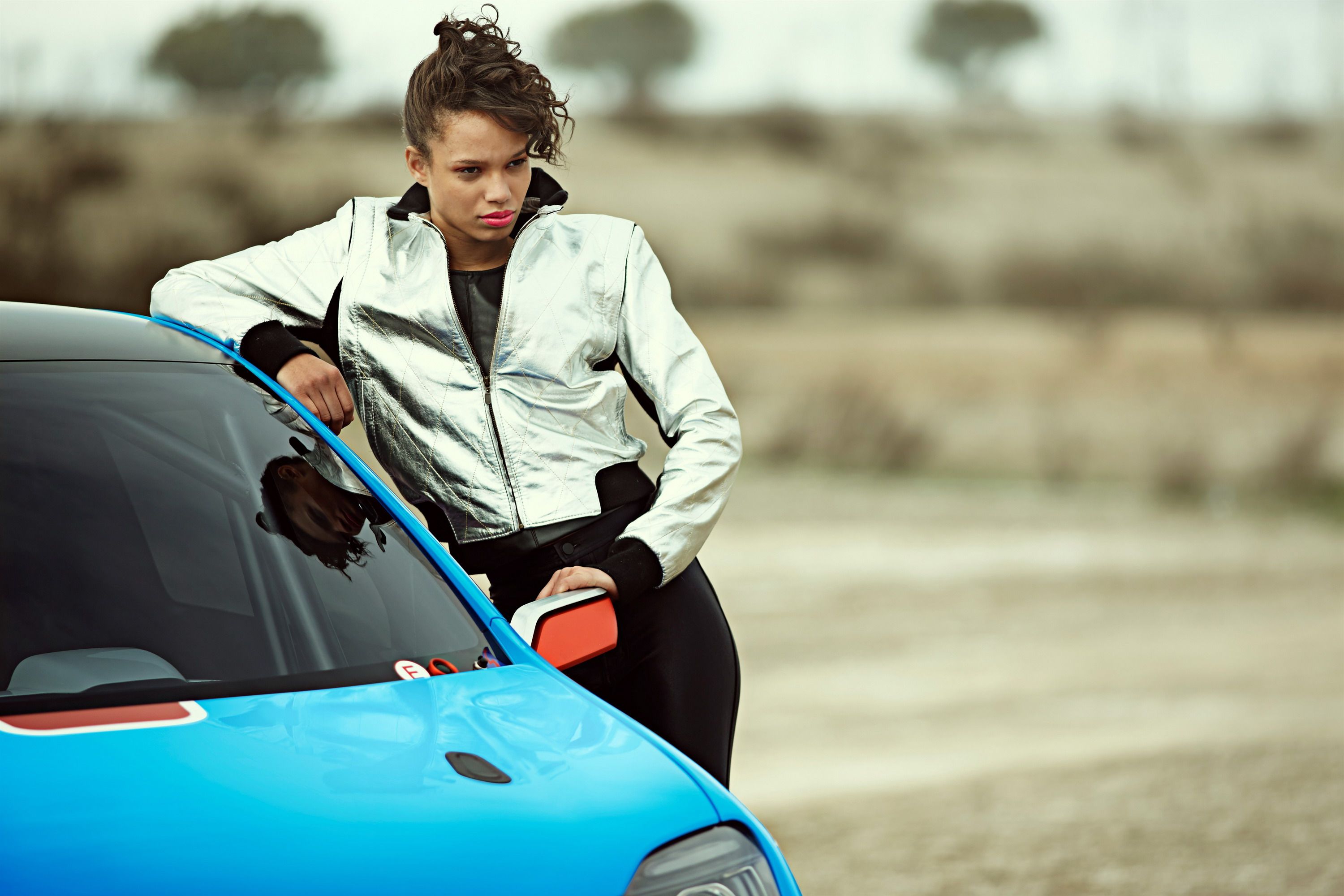
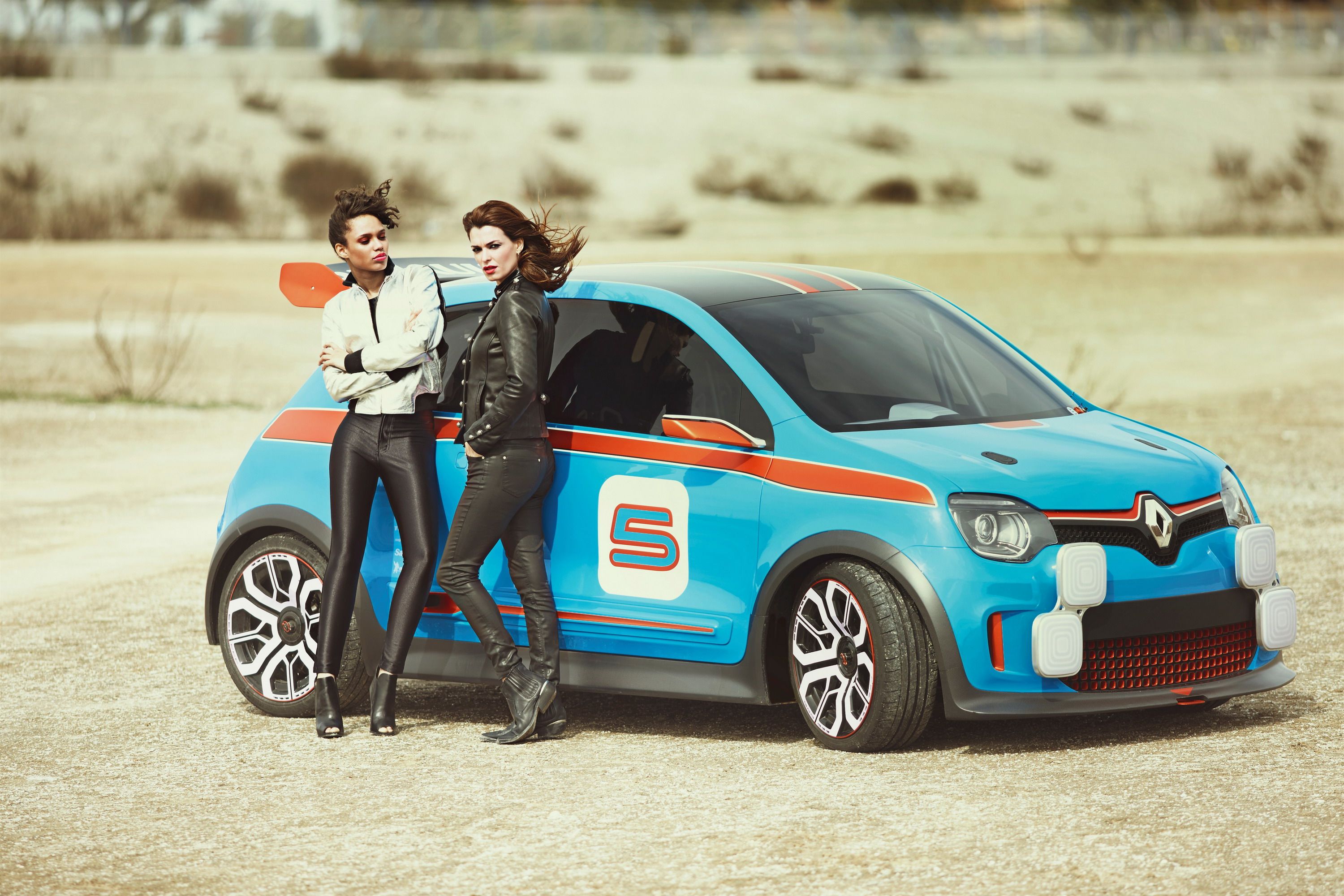

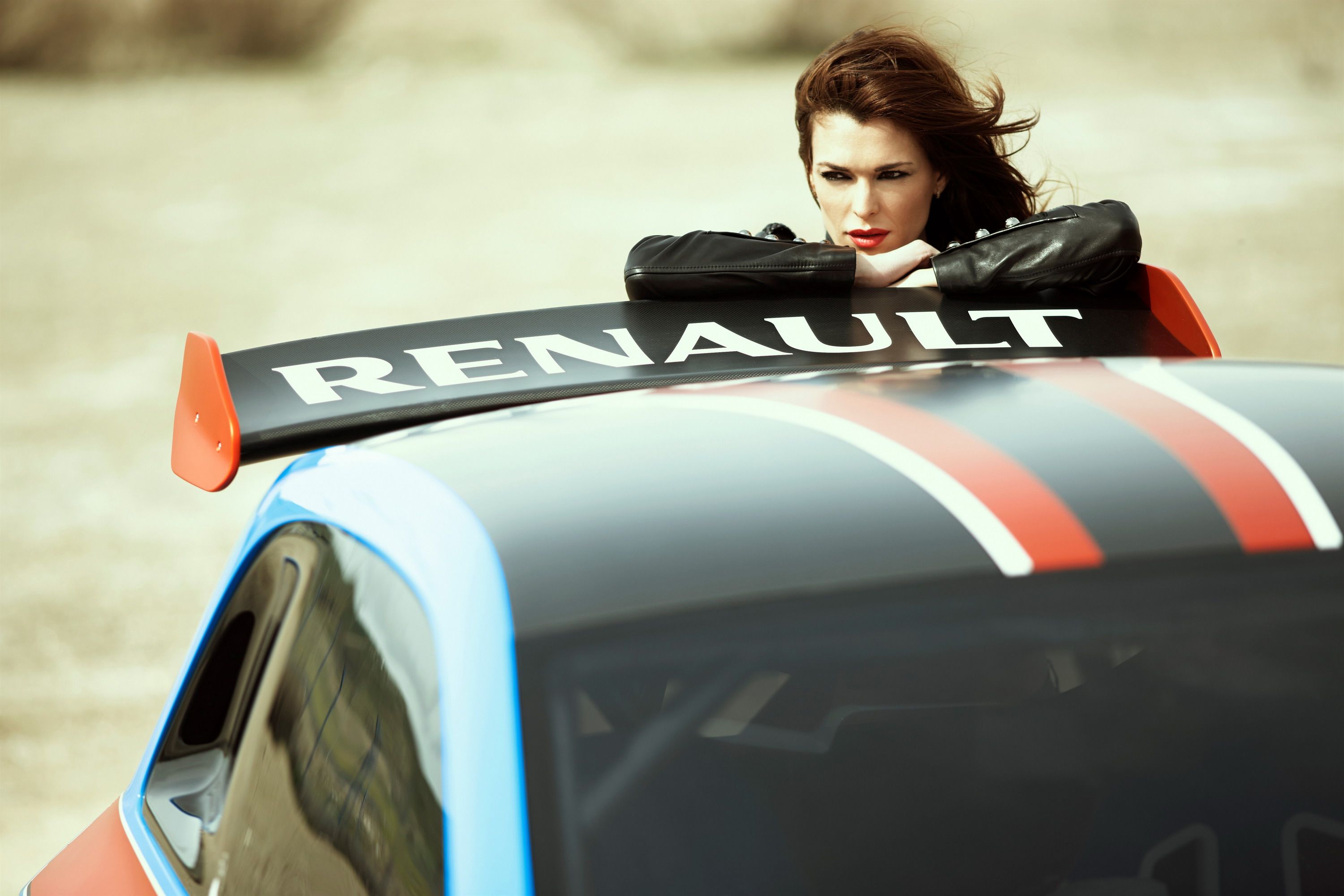
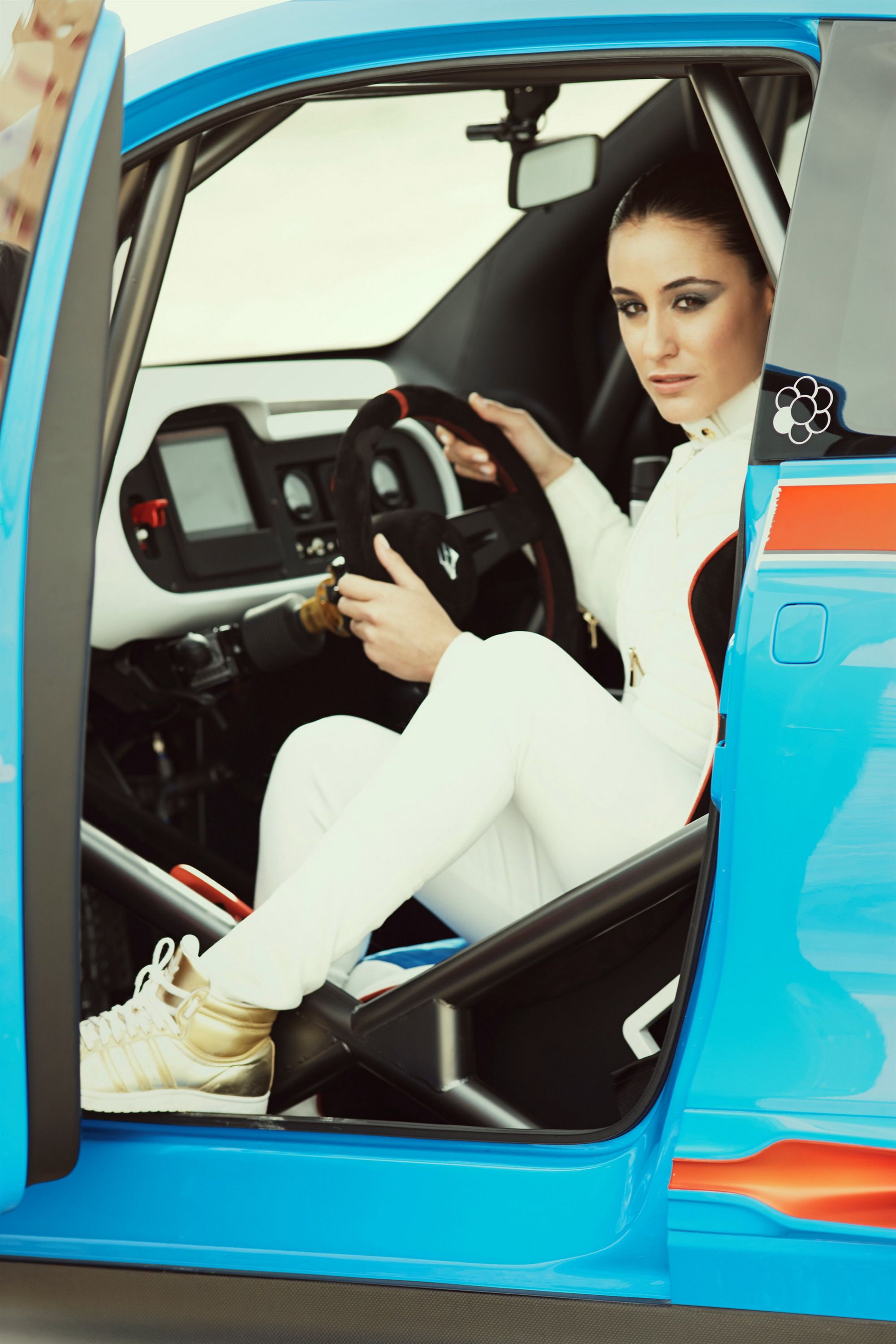
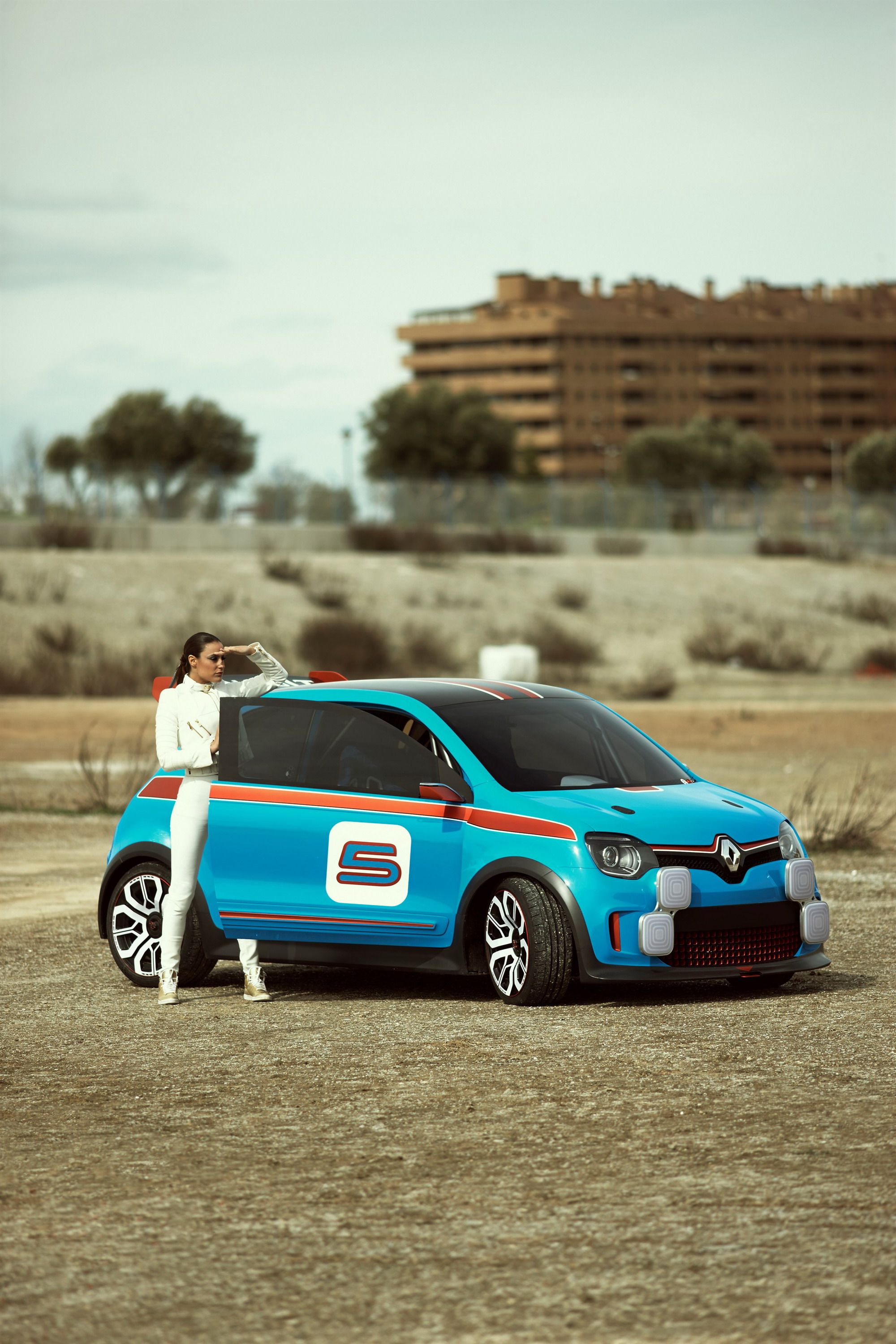
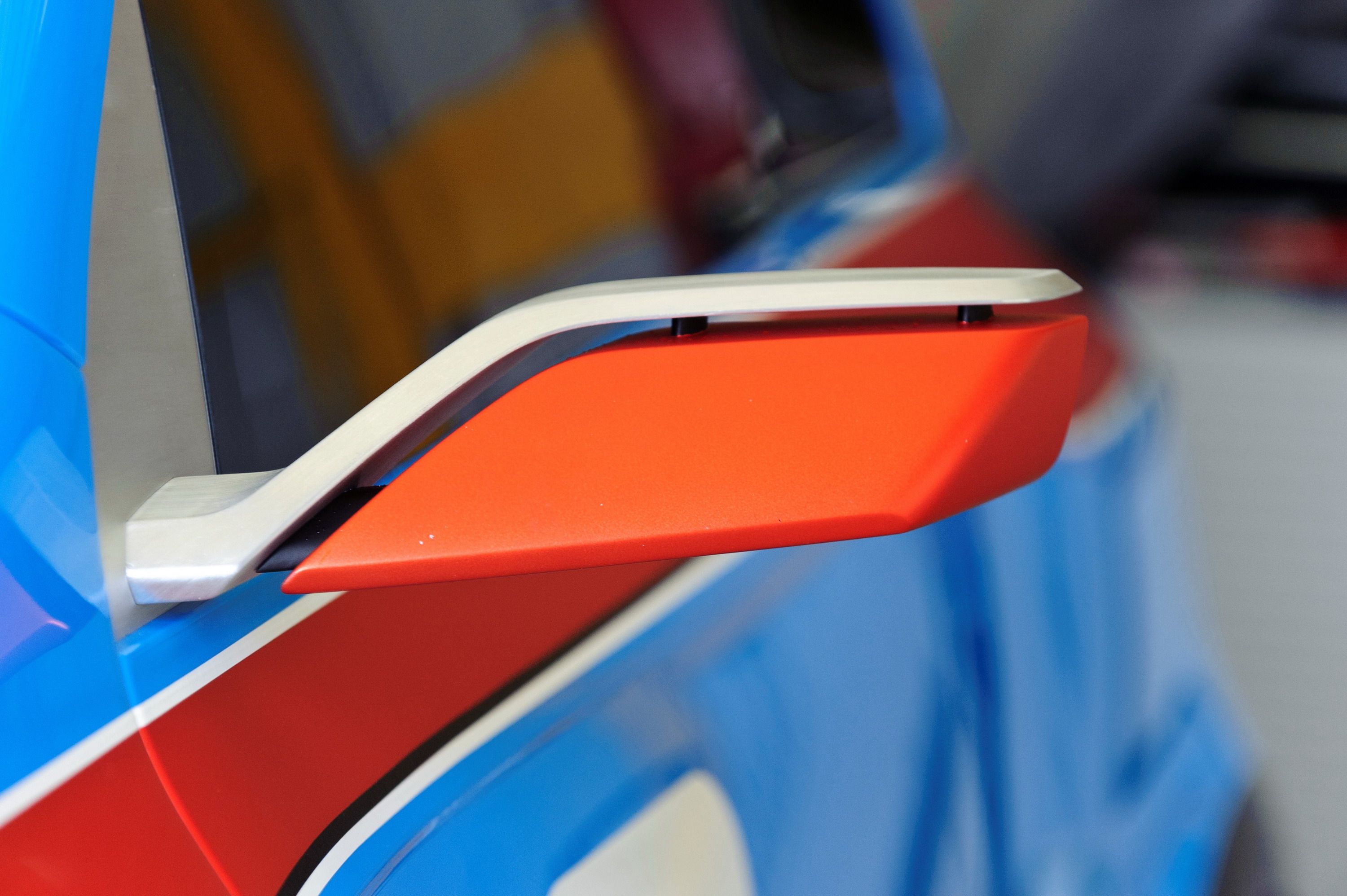
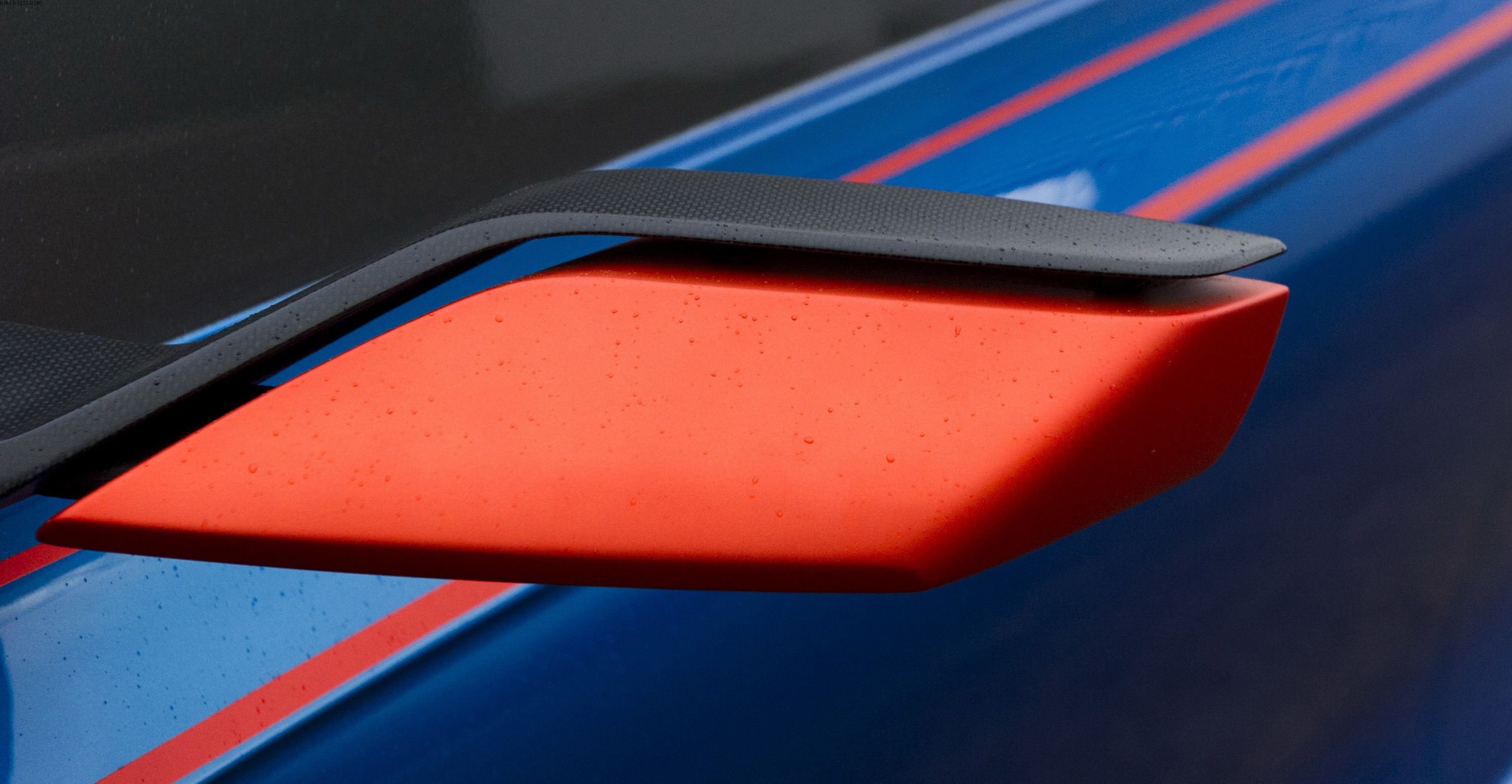
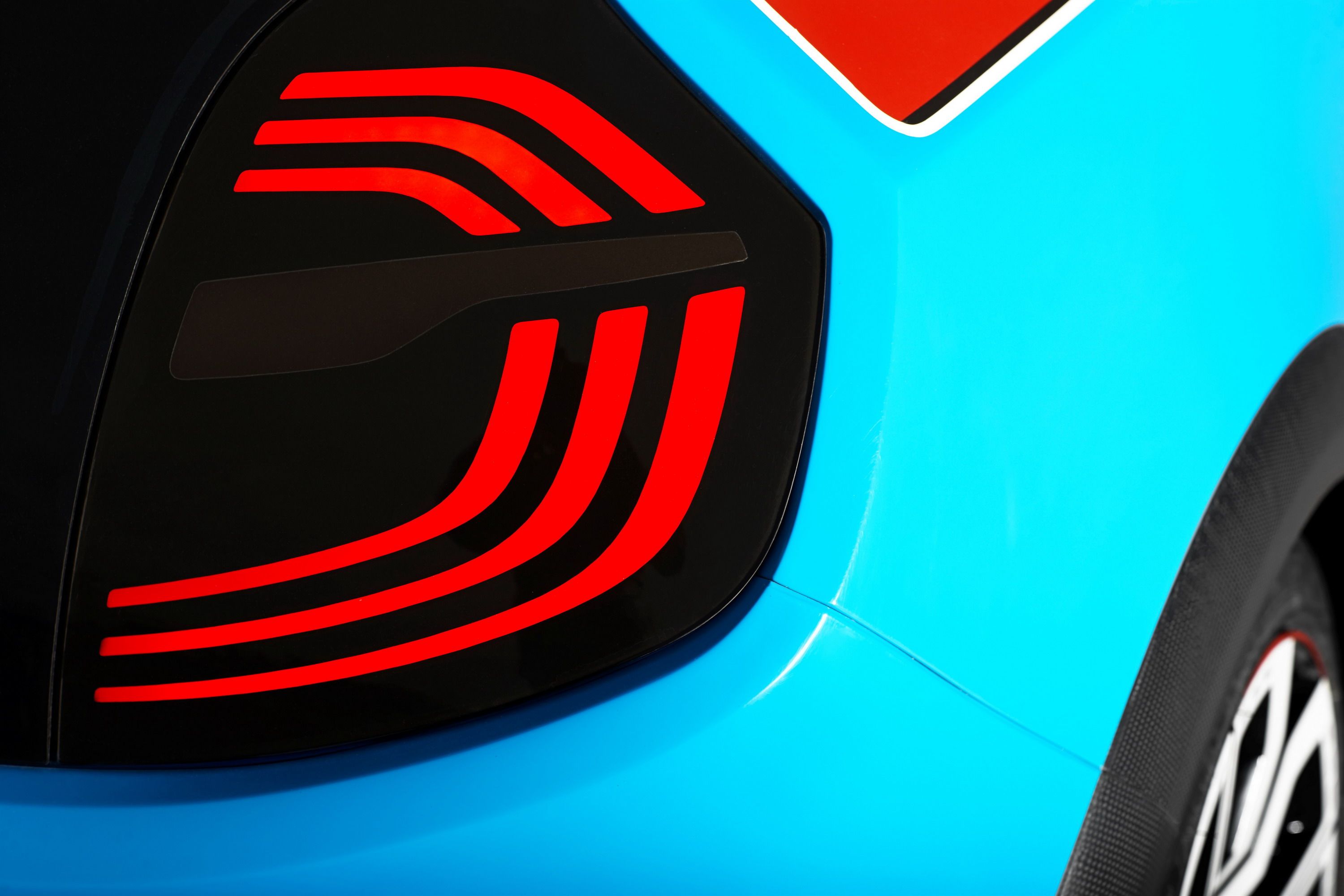
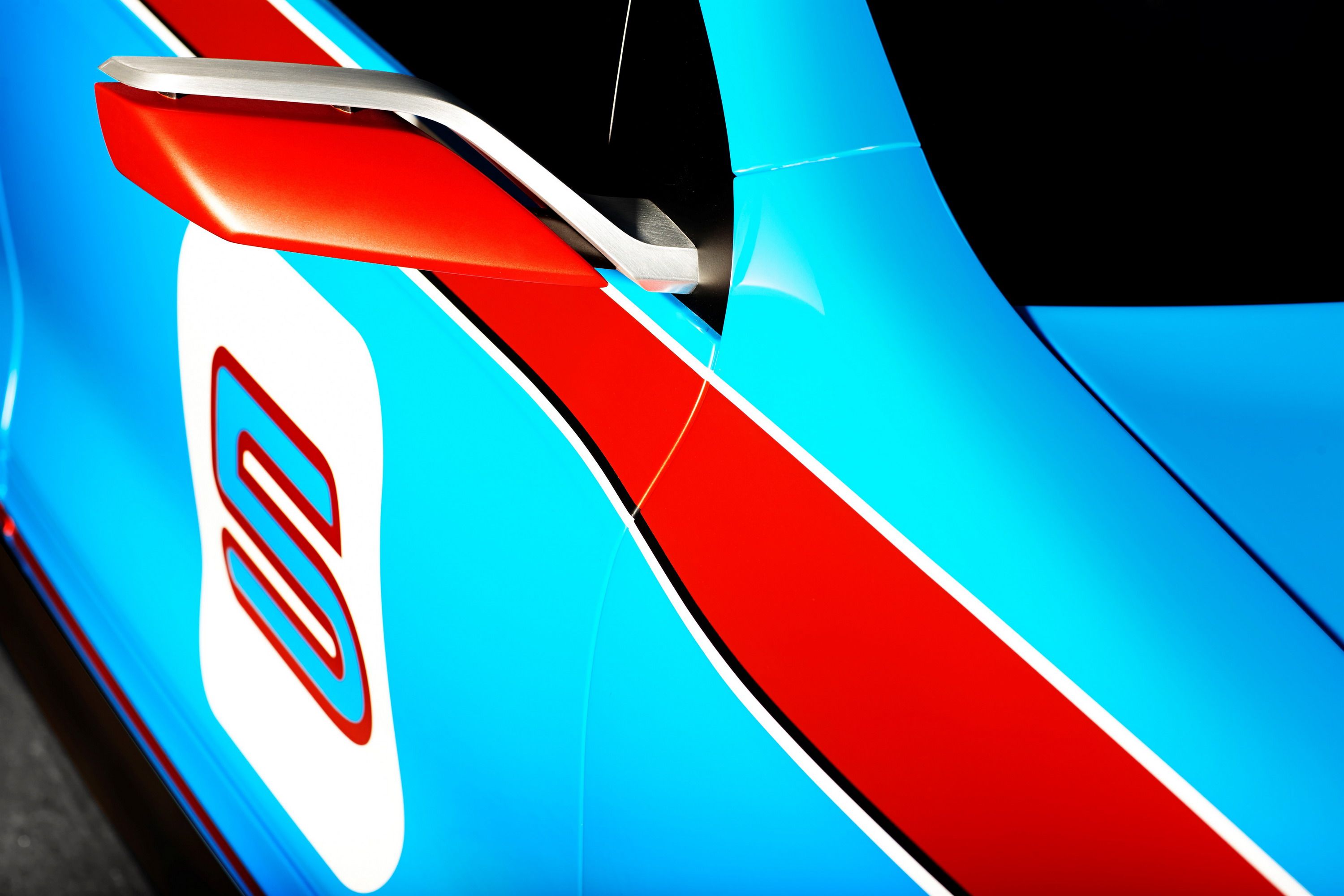
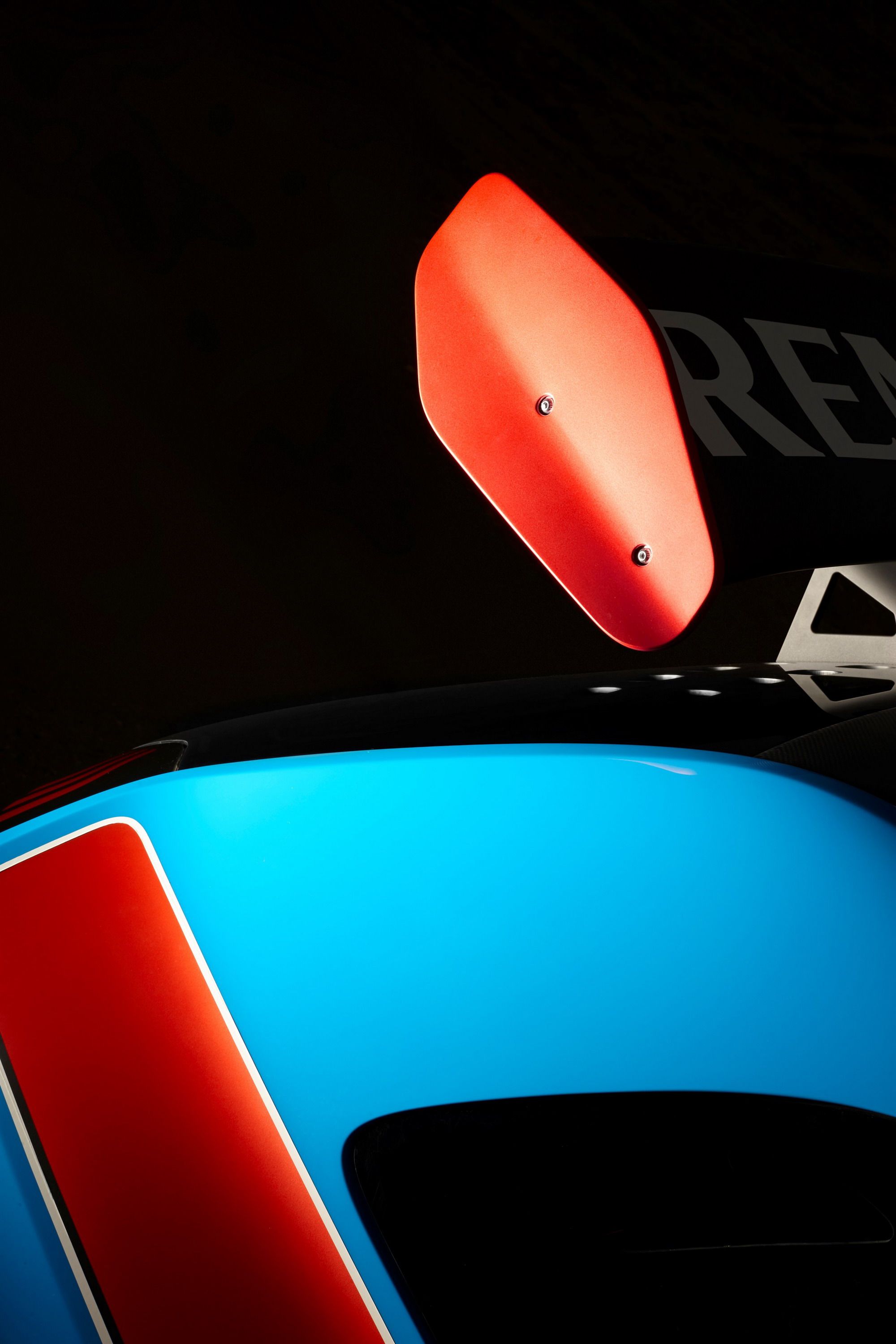
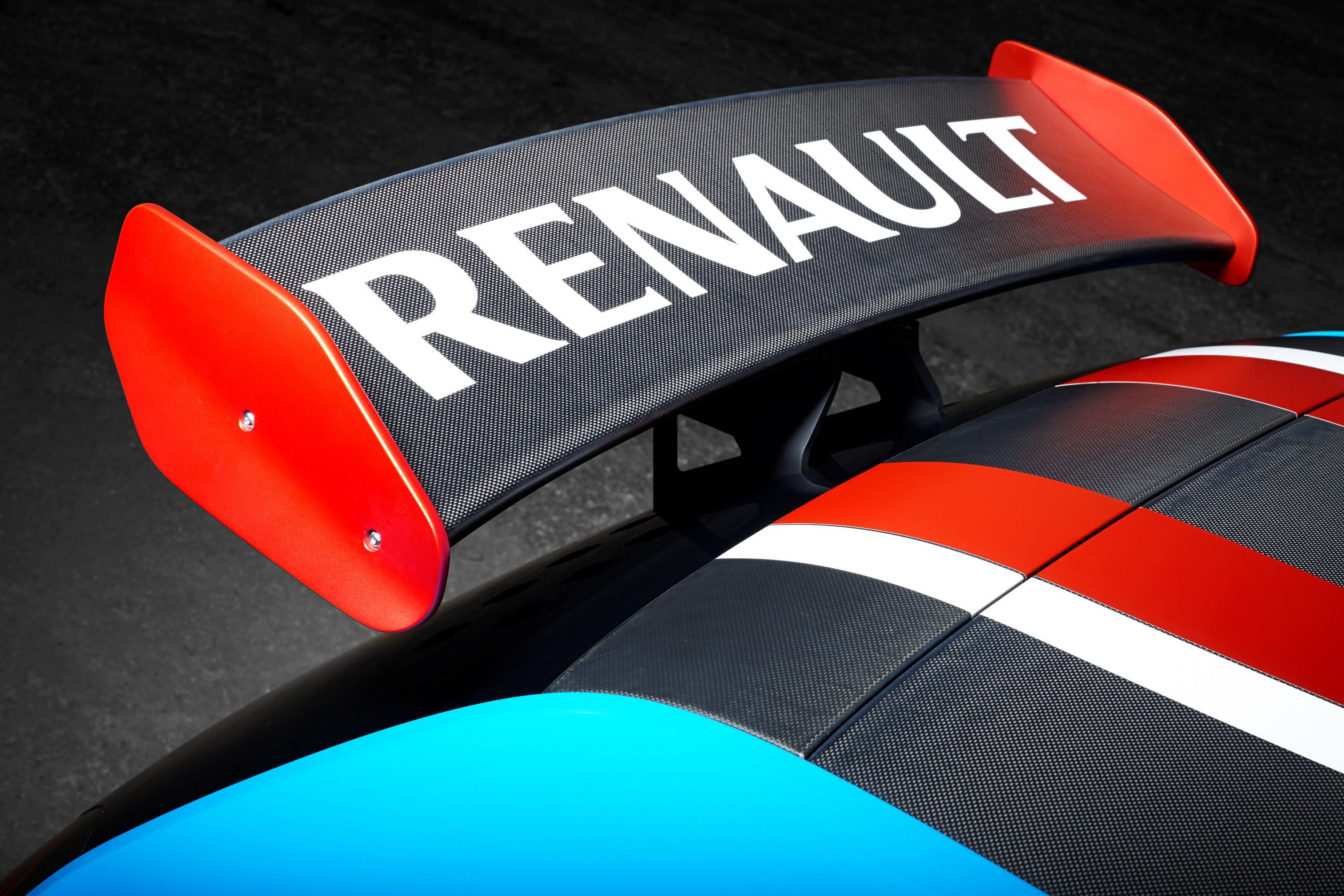
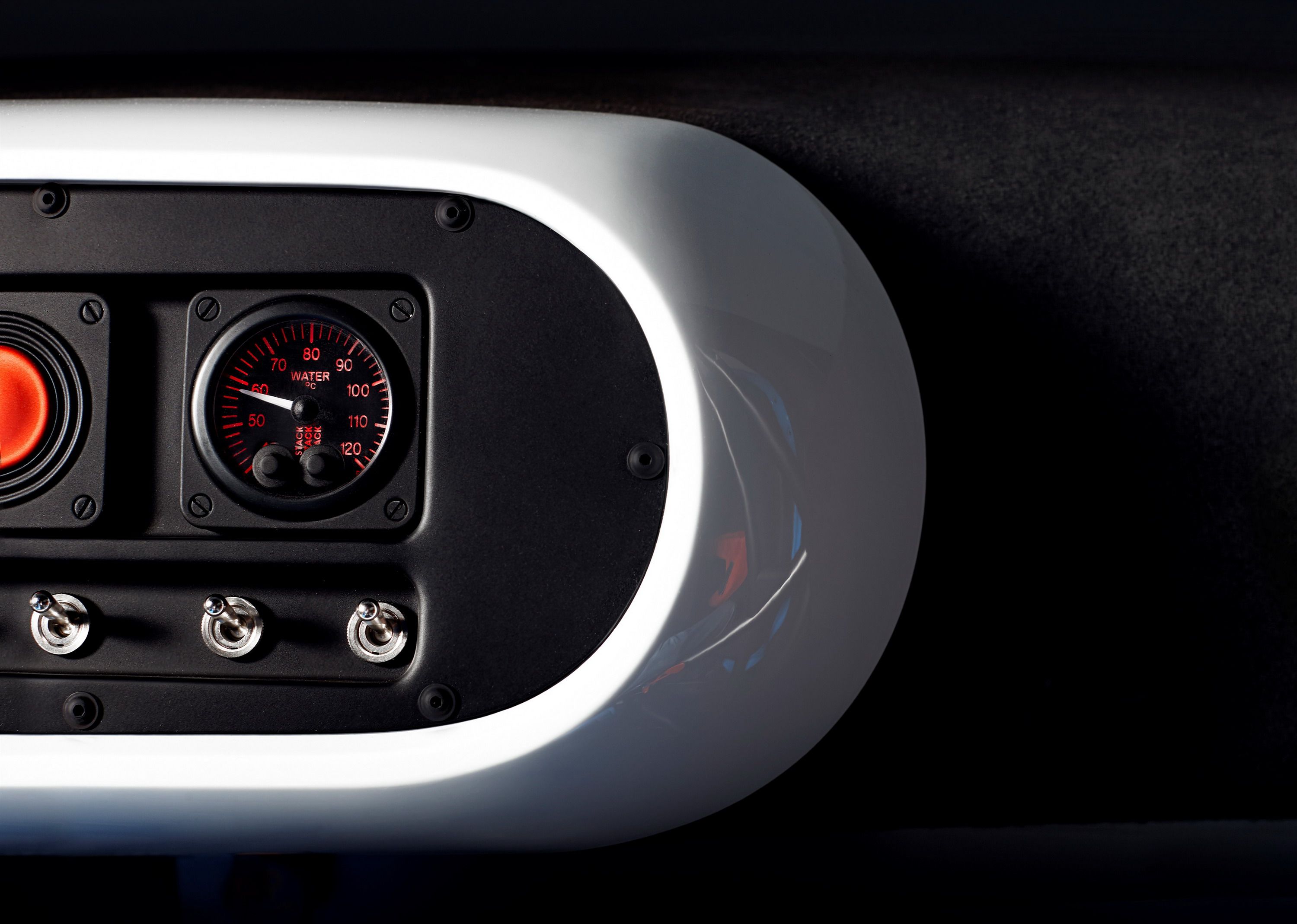
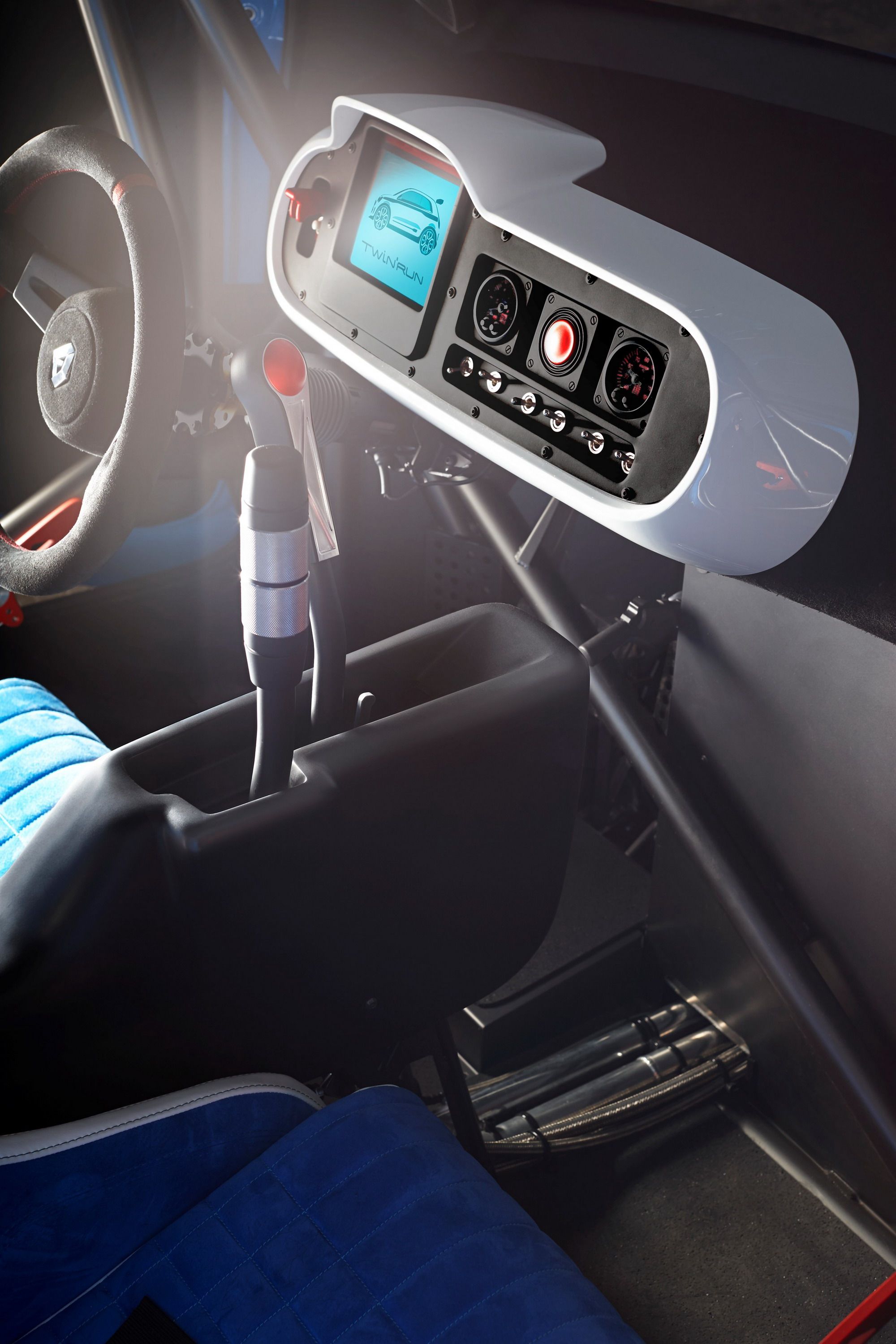
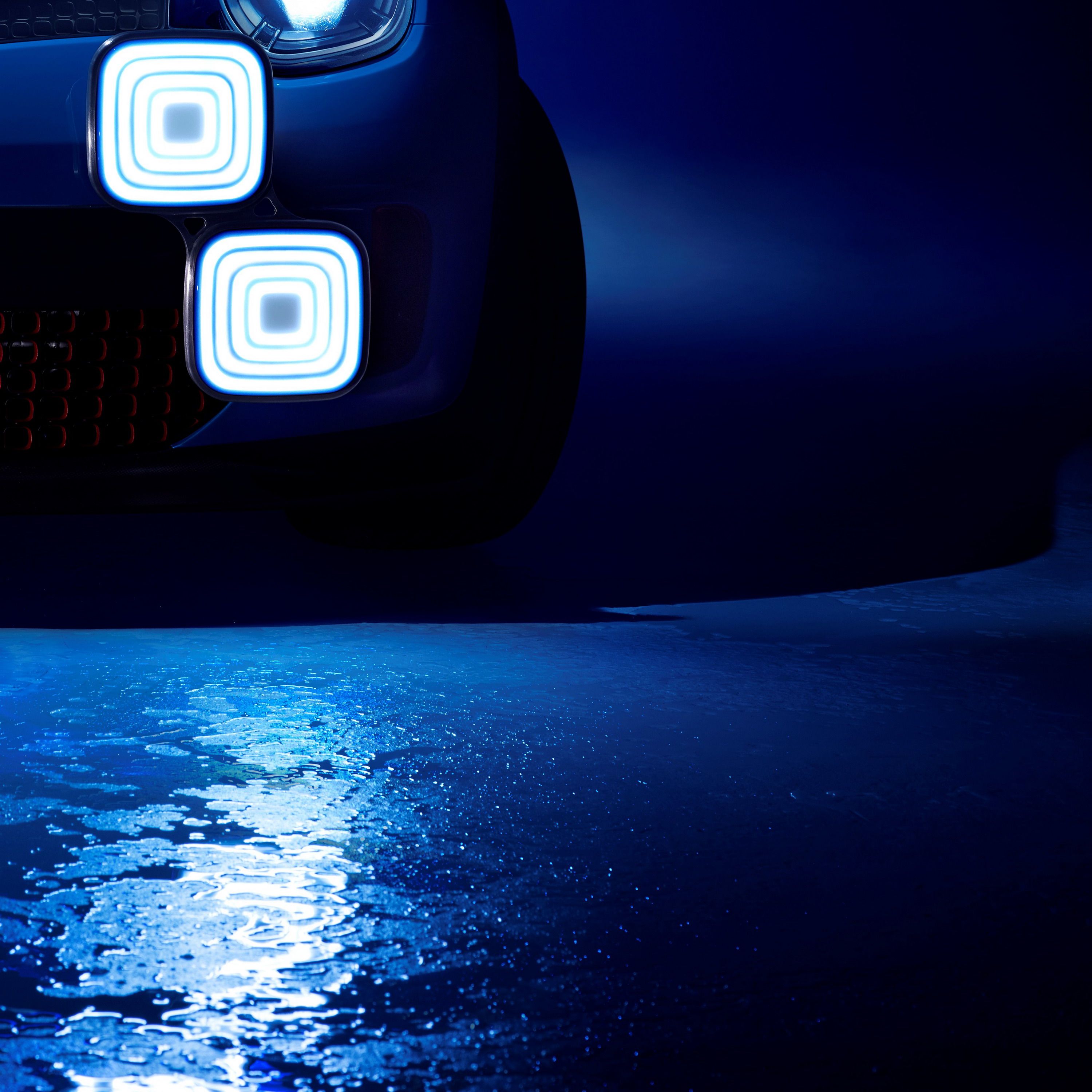
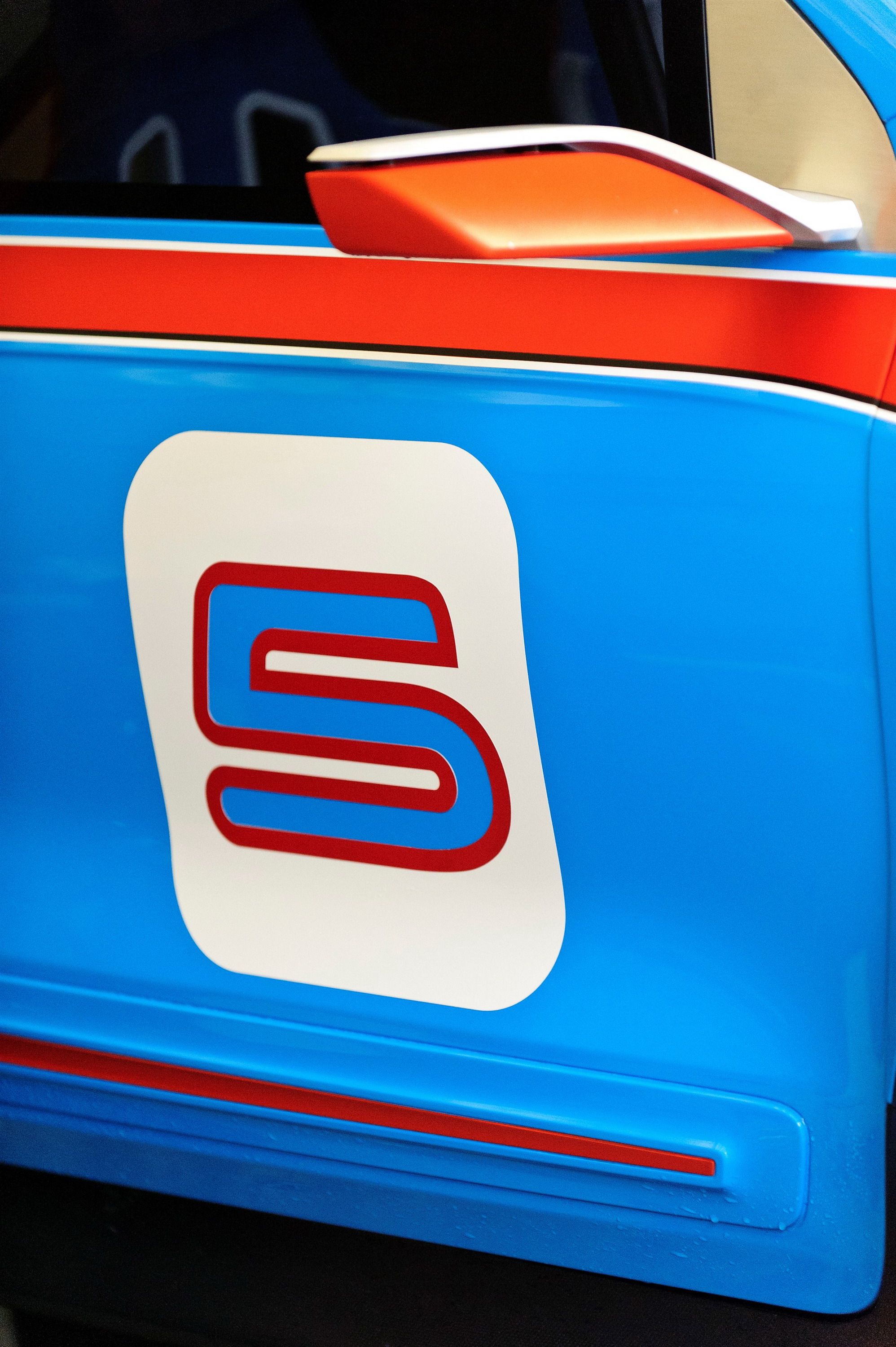
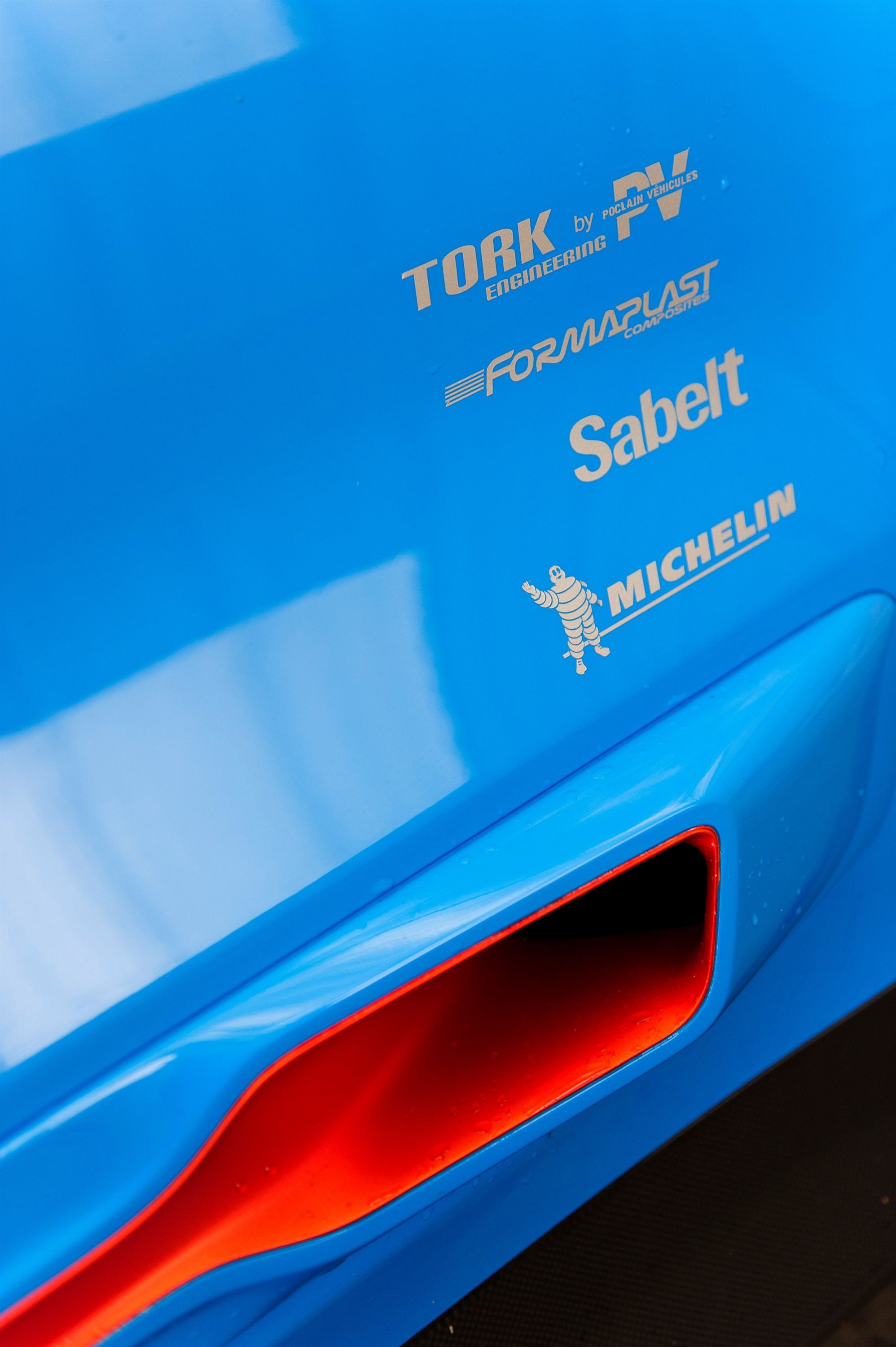
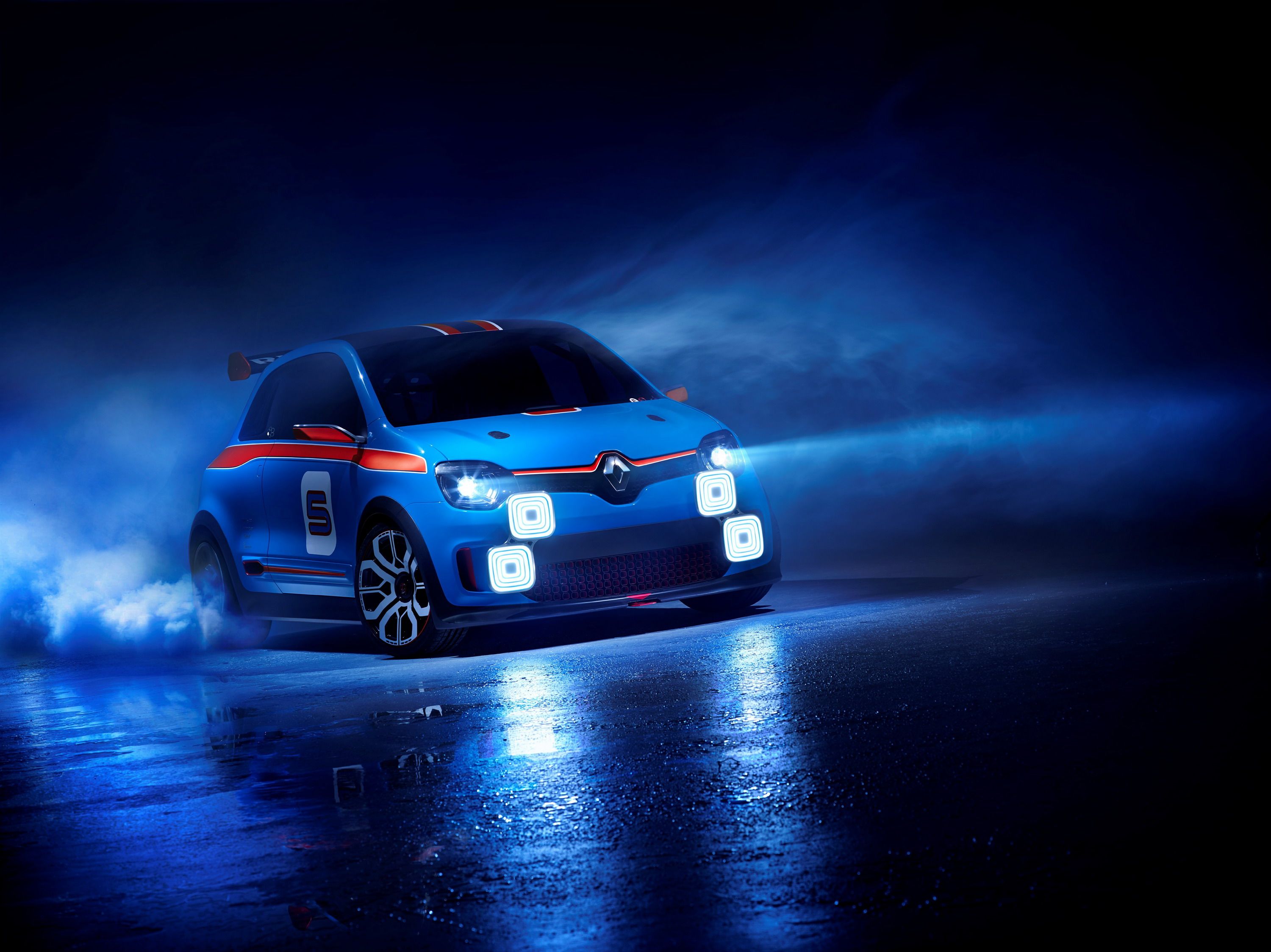
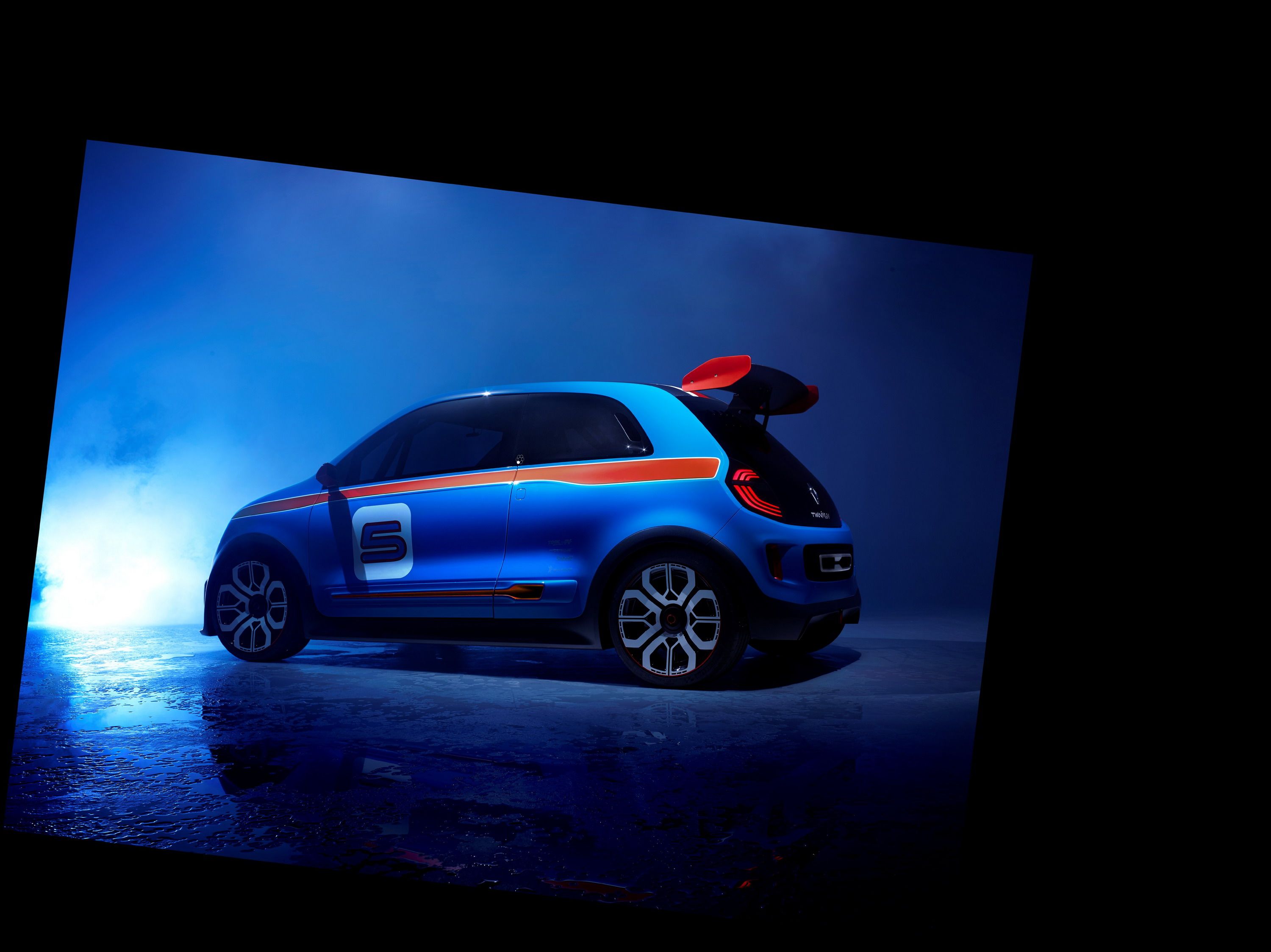
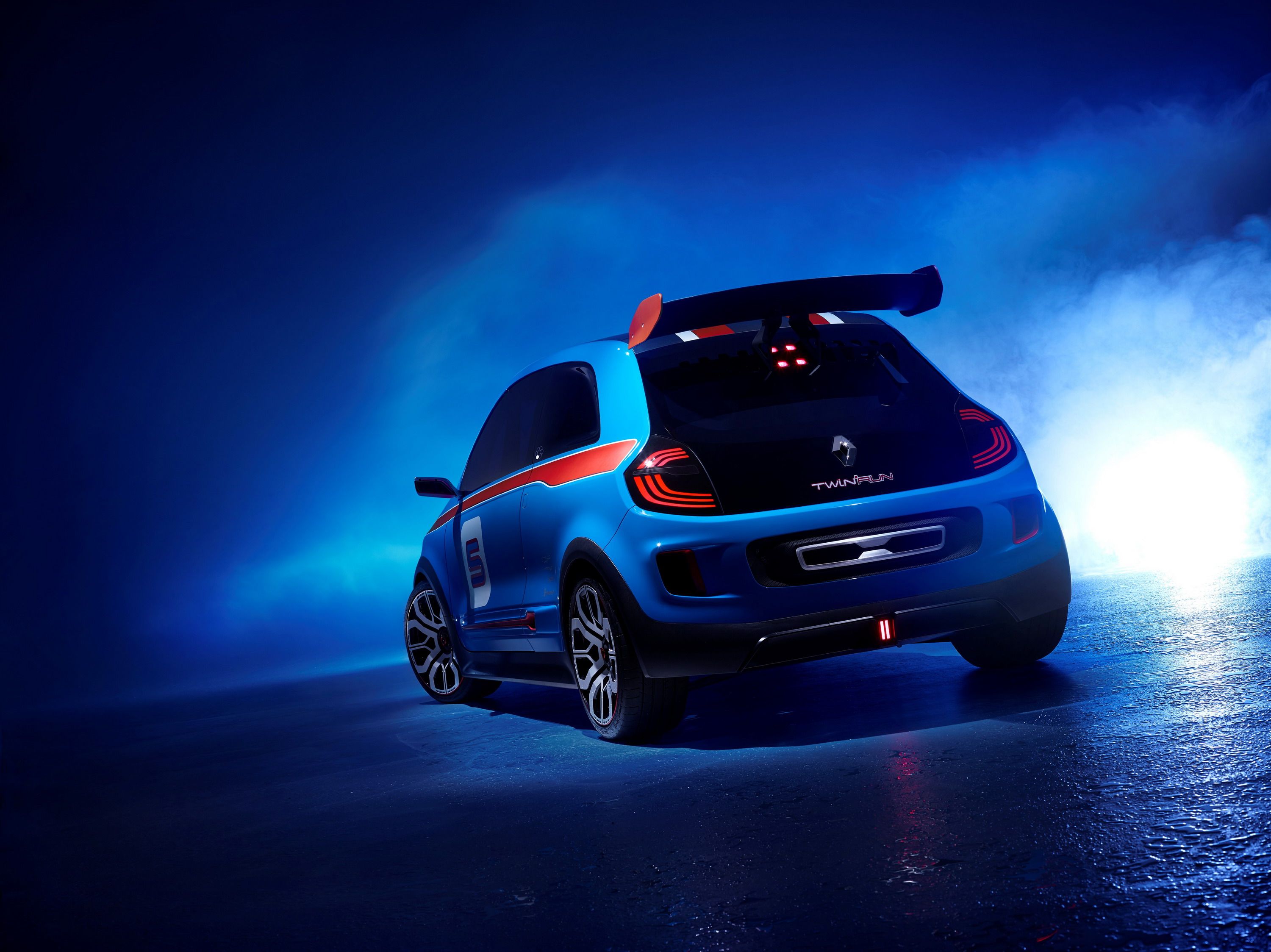
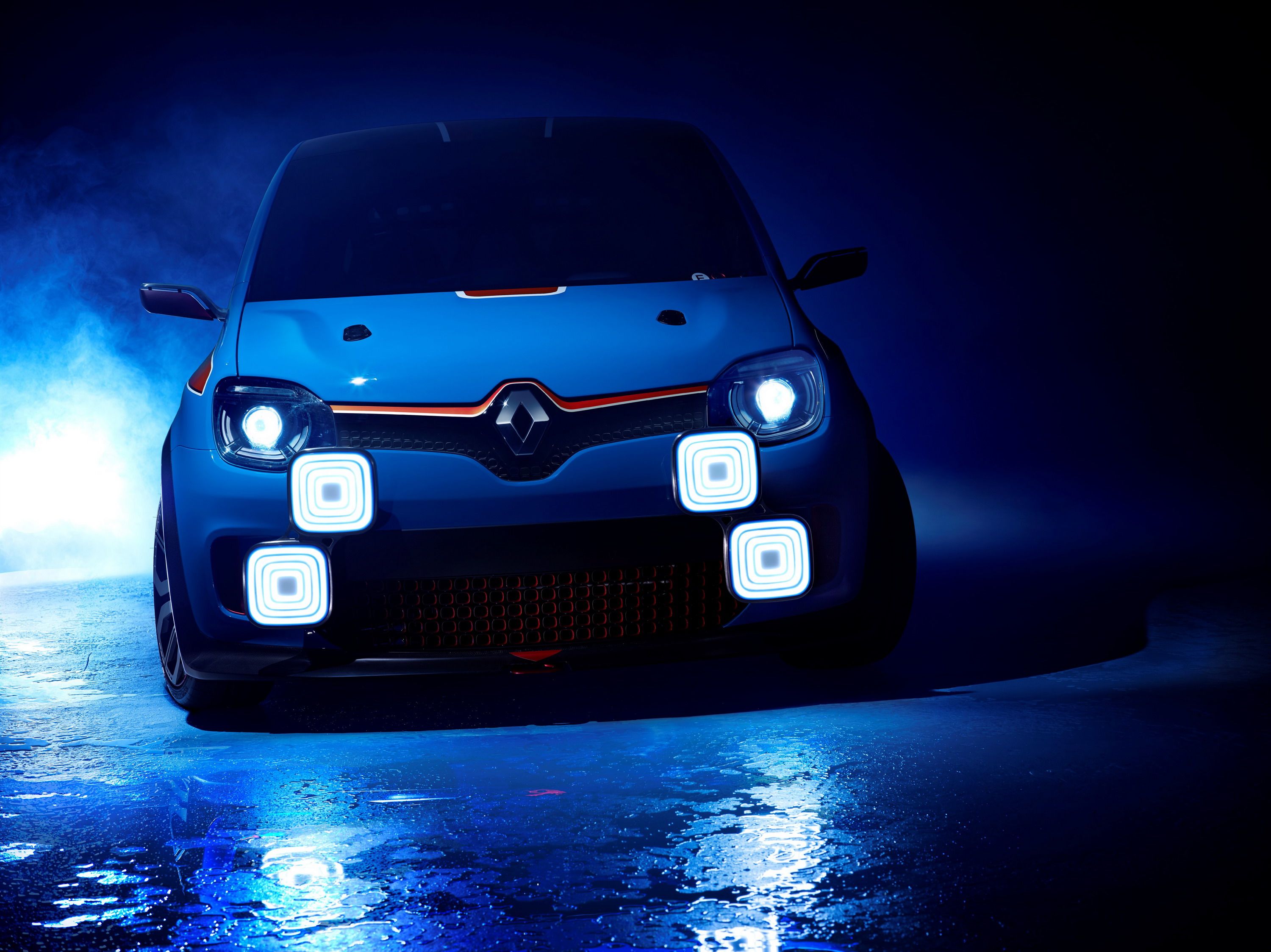
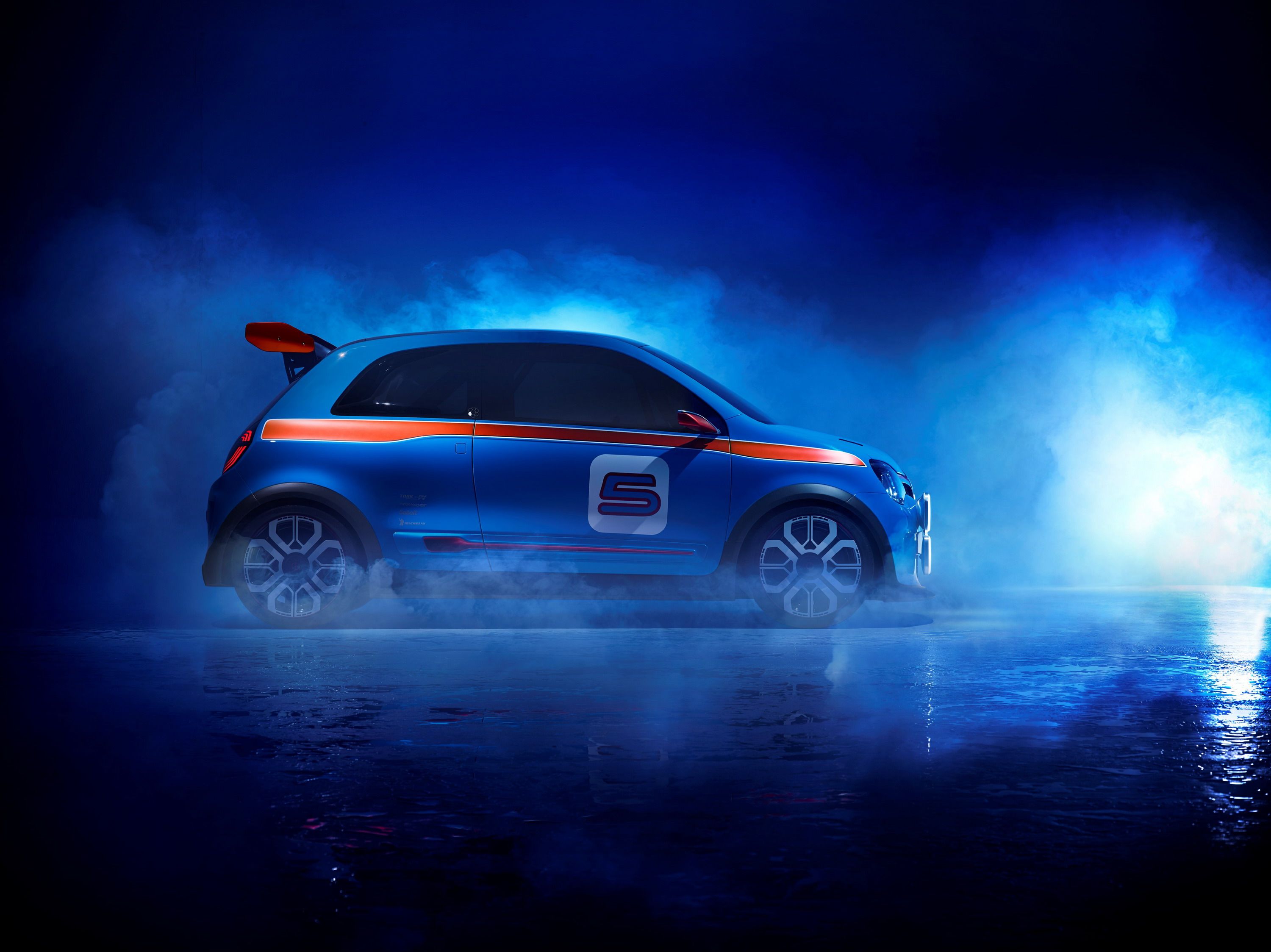
- Make: Array
- Model: 2013 Renault Twin'Run Concept
- Engine/Motor: V6
- Horsepower: 320 @ 6800
- Torque: 280 @ 4850
- [do not use] Vehicle Model: Array
Exterior

The concept features a blue paint finish combined with a red stripe running the length of the body. It also includes two red bands on the roof and red insertions on the front end, the ultra-slim door mirrors and the tips of the rear spoiler. The concept is wearing a No. 5 on its doors in tribute to the R5 Turbo - a rally car that made history in the 1980s.
The concept is distinguished by four additional, extra-flat headlights with LED technology; a diamond-dominated front end; and an aerodynamic kit that makes it ready for any racetrack in the world.
Exterior Dimensions:
|
Length |
3,680 mm (144.9 inches) |
|
Width |
1,750 mm (68.9 inches) |
|
Height |
1,493 mm (58.8 inches) |
|
Front track |
1,522 mm (59.9 inches) |
|
Rear track |
1,497 mm (58.9 inches) |
|
Fuel tank |
40 liters (10.6 gallons) |
|
Unladen weight |
950 kg (2,094.4 pounds) |
Interior

The interior was also prepared specially for a race car, as it comes with: SPARCO seats fitted with safety harnesses; a motorsports steering wheel; a sequential gear lever with a high-mounted layout for fast gear changes; aluminum pedals; and an instrument cluster specially designed for a sports vehicle.
For the door panels and dashboard, Renault used a combination of black and red "Alcantara effect" suede. The padded bucket seats are upholstered in three shades of Alcantara and carry the “Twin'Run” signature.
The concept is also equipped with a 5.5-inch LCD screen that shows the vehicle speed, gear speed and engine speed, as well as fuel pressure, clutch pressure and oil pressure.
Drivetrain

Under the hood of the tiny Twin'Run, Renault placed a 3.5-liter V-6 engine that delivers a total of 320 horsepower at 6,800 rpm and 280 pound-feet of torque at 4,850 rpm. The engine is mated to a SADEV six-speed sequential gearbox with a limited-slip differential. The concept sprints from 0 to 60 mph in 4.5 seconds and up to a top speed of 155 mph.
Engine Specifications :
|
Engine Type |
Nissan VQ35 from the Renault-Nissan Alliance |
|
Engine positioning |
Mid-engine longitudinally mounted |
|
Engine Configuration |
3,498 cc 24-valve V-6 |
|
Max power |
320 horsepower at 6,800 rpm |
|
Max torque |
380 Nm (280 lb-ft) at 4,850 rpm |
|
Max engine speed |
7,500 rpm |
Driveline Specifications:
|
Configuration |
Rear-wheel drive |
|
Transmission Type |
Six-speed sequential gearbox |
|
Traction Control |
Limited slip differential |
|
Clutch |
184 mm (7.24-inch) twin-metallic-disc clutch |
Performance Specifications:
|
0 to 100 km/h (62 mph) |
4.5 seconds |
|
Top speed |
155 mph |
Suspensions and brakes

The new Twin'Run concept was built on a multi-tube high-performance steel chassis derived from aeronautics and developed entirely by Tork Engineering. Also, both front and rear axles are fitted with double-wishbone suspension with independent pivots.
The concept sits on 18-inch alloy wheels wrapped in Michelin tires.
Chassis:
-Steel multi-tube 25CD4S
-Double wishbone suspension at front and rear
-OHLINS two-way spring-damper combinations, front and rear
Brakes:
-Front brakes, vented discs 356-by-32 mm (14.01-by-1.26-inch) discs and six-piston calipers
-Rear brakes, vented discs 328-by-30 mm (12.91-by-1.18-inch) discs and four-piston calipers
Wheels and tires:
-Front: 7.5-by- 18-inch alloy wheels and Michelin tires 205/40R18
-Rear: 8.5-by-18-inch alloy wheels and Michelin tires 245/35R18
When can I drive one?
Most likely never, but Renault will use design elements from Twin'Run in a future city car.
Competition
The Twin'Run has been developed just to show what Renault can really do, so it makes pretty much no sense talking about competitors for it. Still, if you want to take a look of another city car out there, we can find a few alternatives.
The i10 is just preparing to enter a new generation. The model has been caught testing many times in the past few months and it is expect to debut in September 2013 at the Frankfurt Motor Show.
The new i10 will feature a new design language with a bigger grille, a clearer side profile and a more sloped roof. Under the hood, we expect to see a new lineup of engines that are smaller and more fuel efficient.
Up! is one of the latest and coolest city cars to hit the market. It comes with a number of engine options, including: a new 1.0-liter three-cylinder gas engine that produces an output of either 60 or 75 horsepower and a natural-gas-powered engine that delivers 68 horsepower.
Even though it’s relatively new, the Up! won the heart of many European clients, mainly because of its funky look and the relatively low price of £7,995 ($12,500).
Conclusion
It would have been cool to see such a powerful and tiny car put into production, but we'll need to be realistic and understand it will likely never happen. Still, for Renault it was a nice design exercise!

